Read/Write
How to make a cover for your ebook
List of apps for those who don't know (or don't want to) draw
Assuming that your book doesn't have to stand out for its beautiful cover (in fact, the goal is not to stand out for its ugly cover), what are the alternatives to make an ebook cover easily and cheaply?
The quick answer is by using Canva or any of its competitors.
I even tested some applications dedicated to creating ebook covers, but nothing compares to the usability that the Canva and its competitors have caught up. I think, however, that they all tend to offer templates aimed at fiction books, so my search for a more technical template was a bit frustrating.
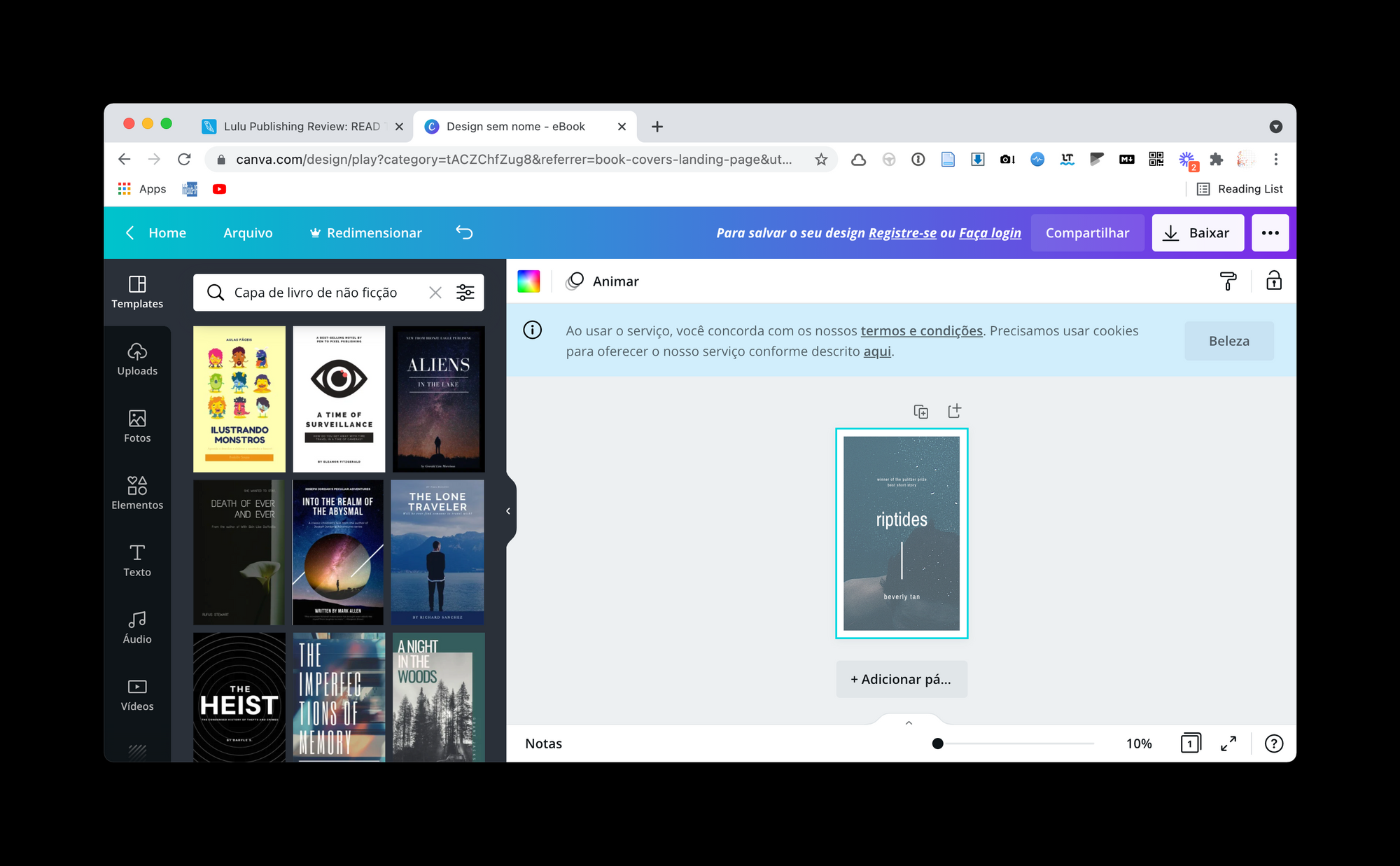
One of my favorite apps is Dysigner , as its collection is huge. Digging through, you can find some very beautiful free templates:
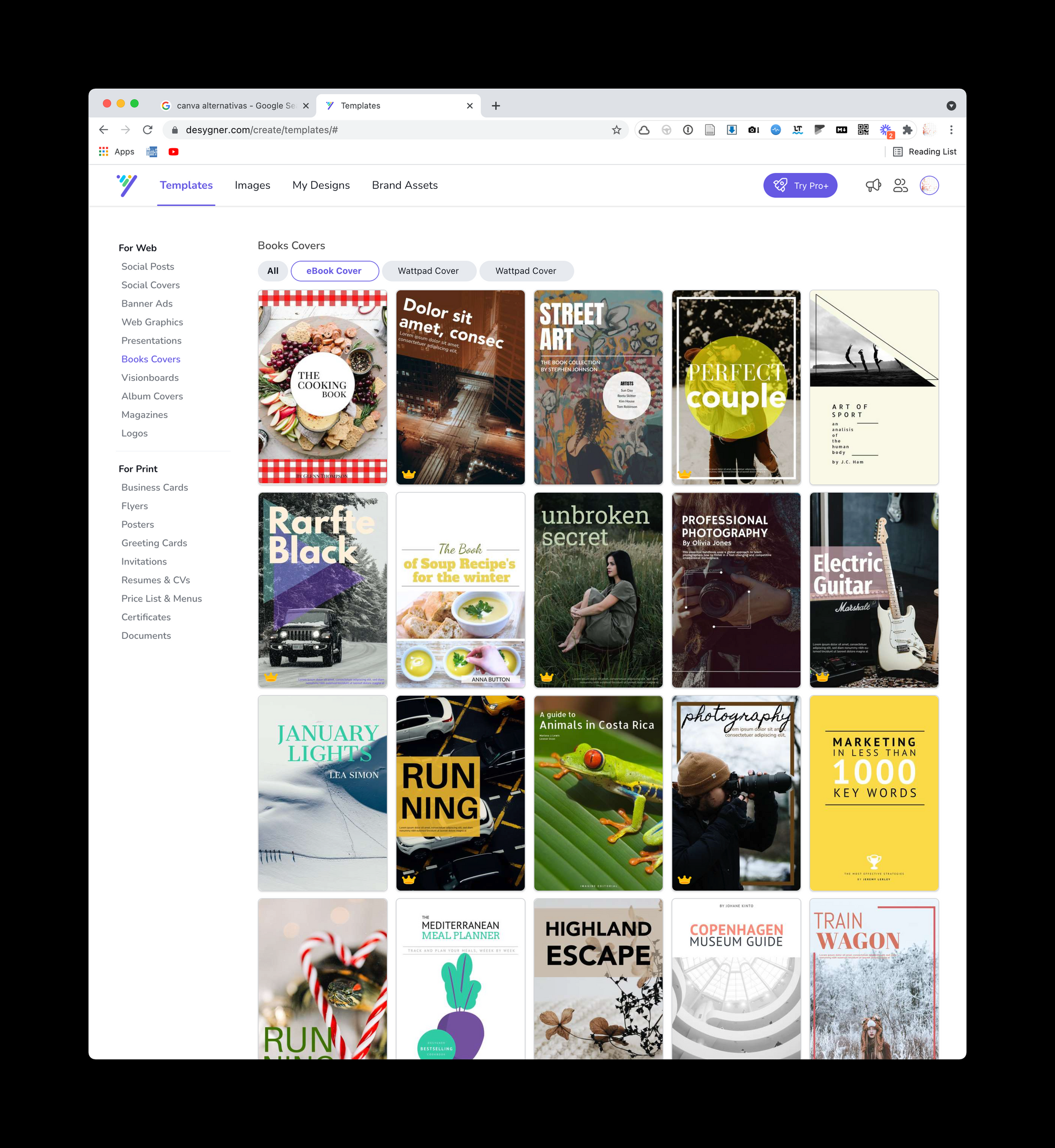
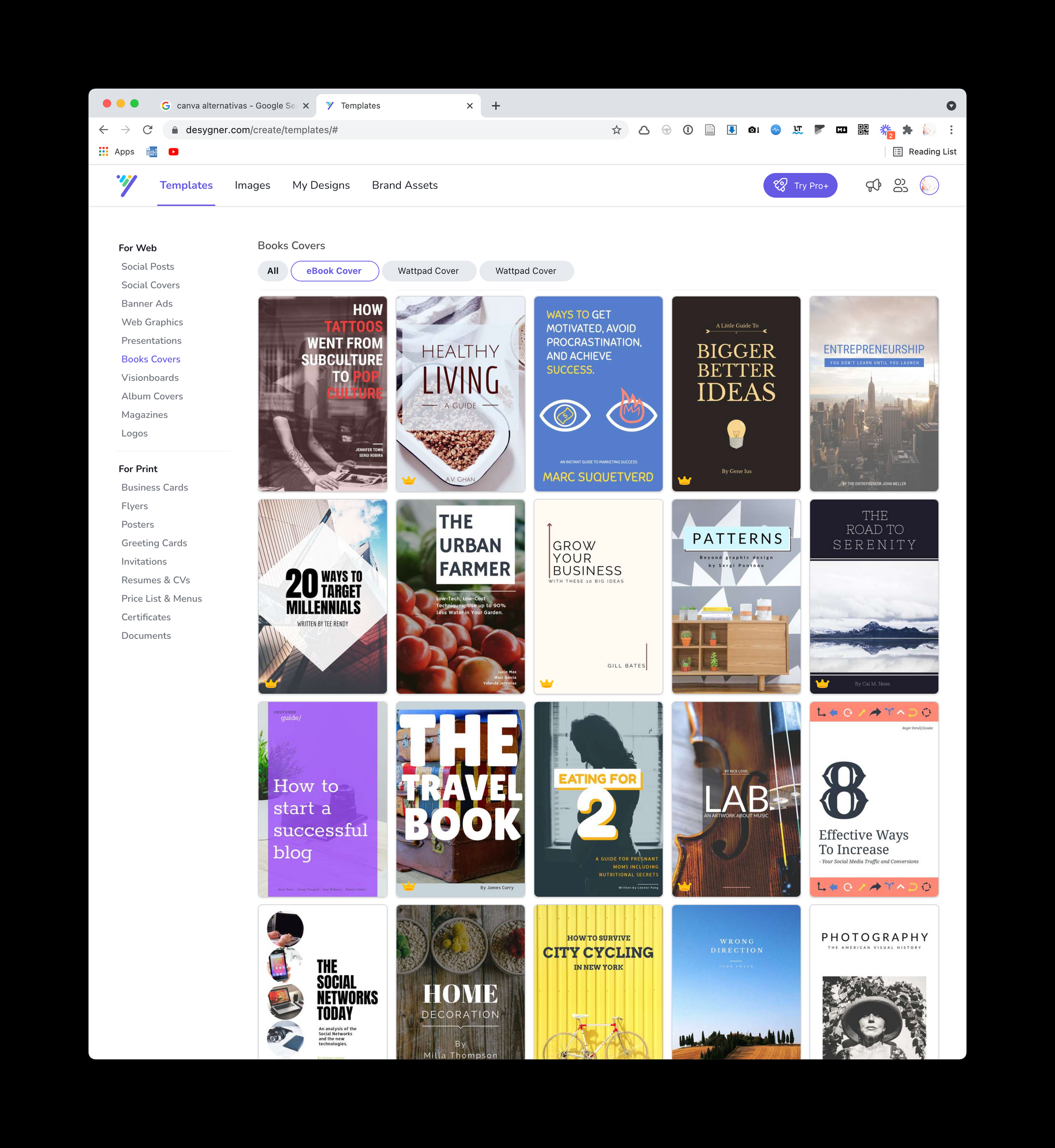
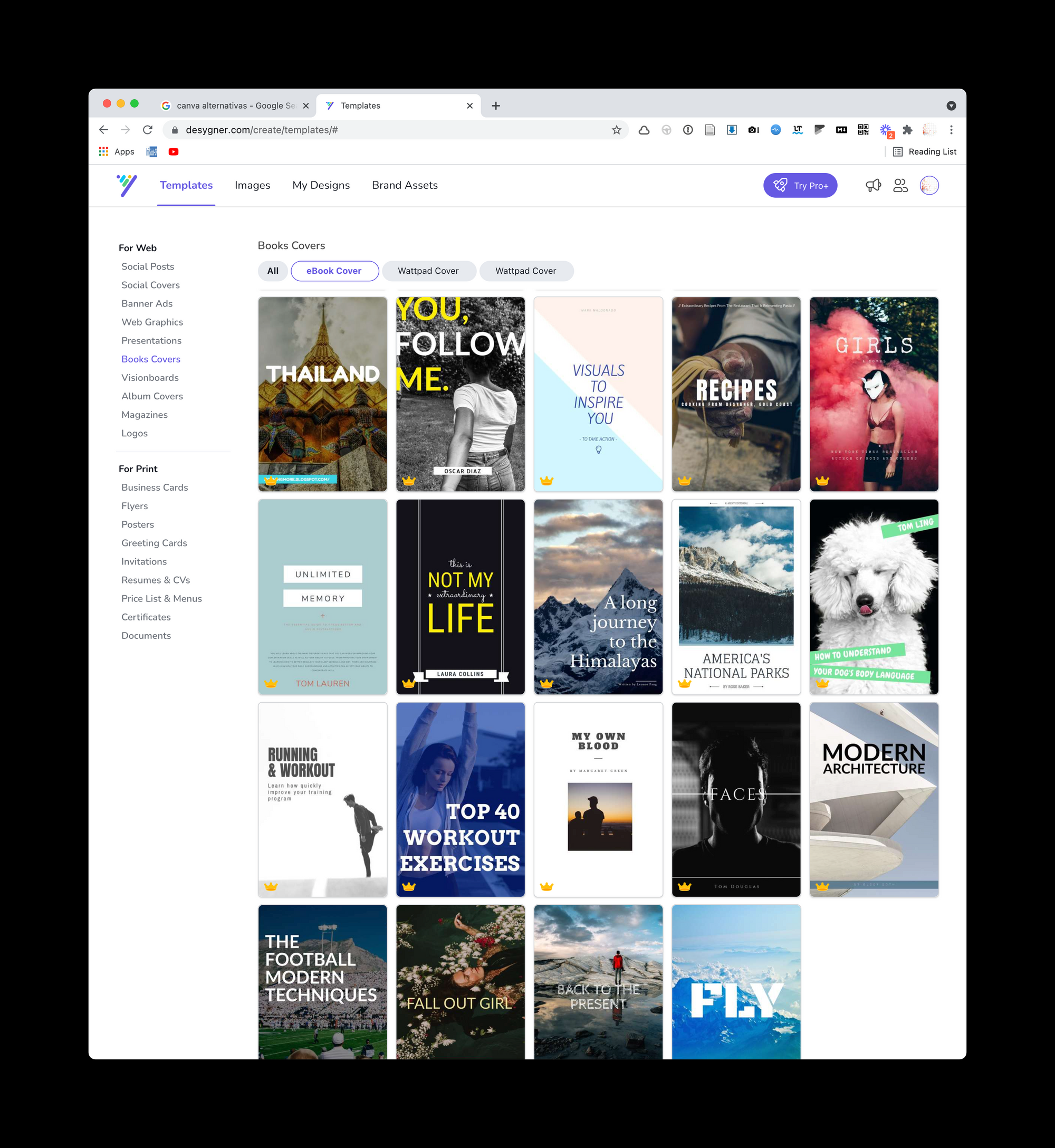

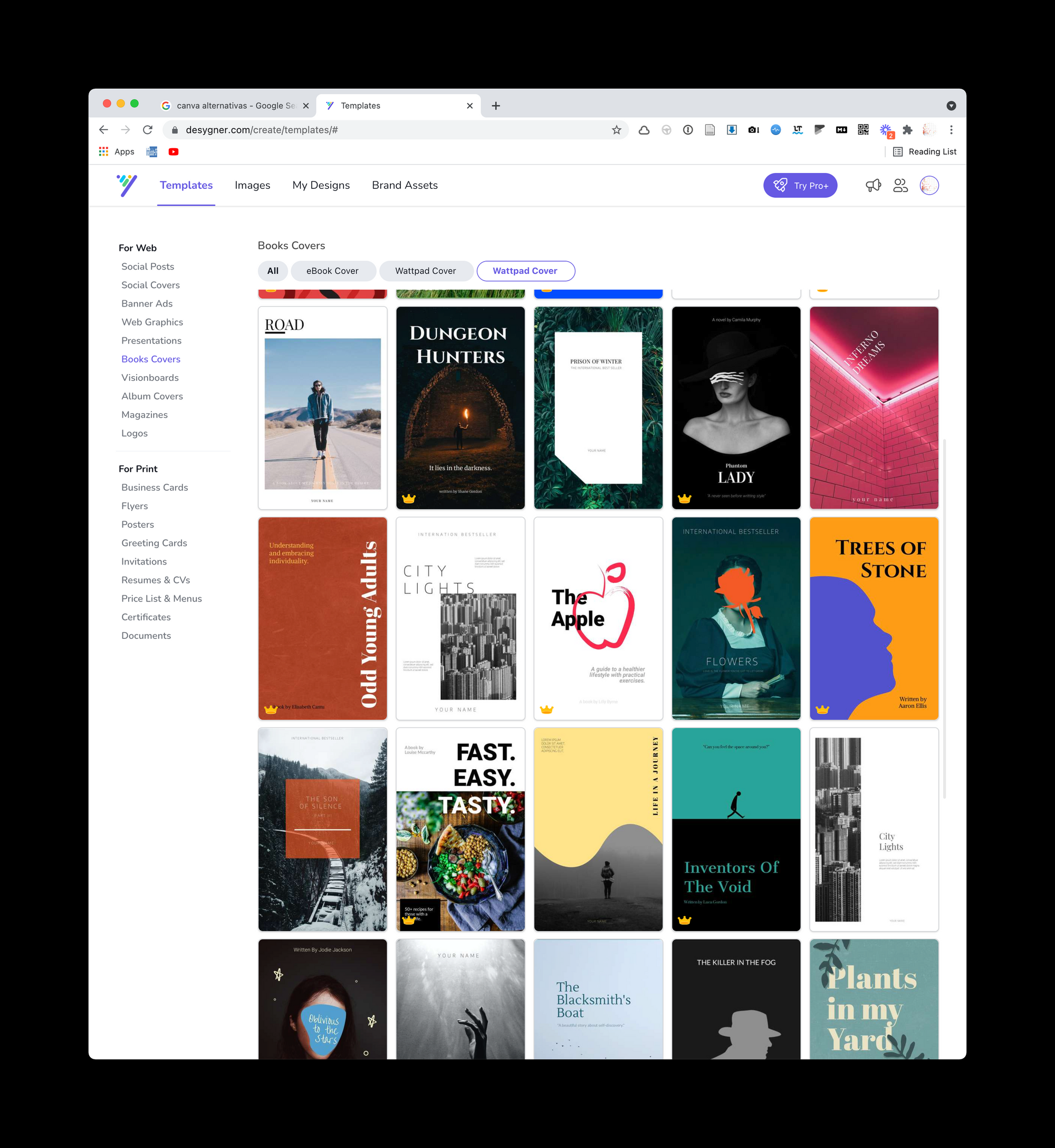

The collection of the Visme It is small, but has some covers with a more corporate look. It's as if Visme's focus is on business reports, not so much ebooks:
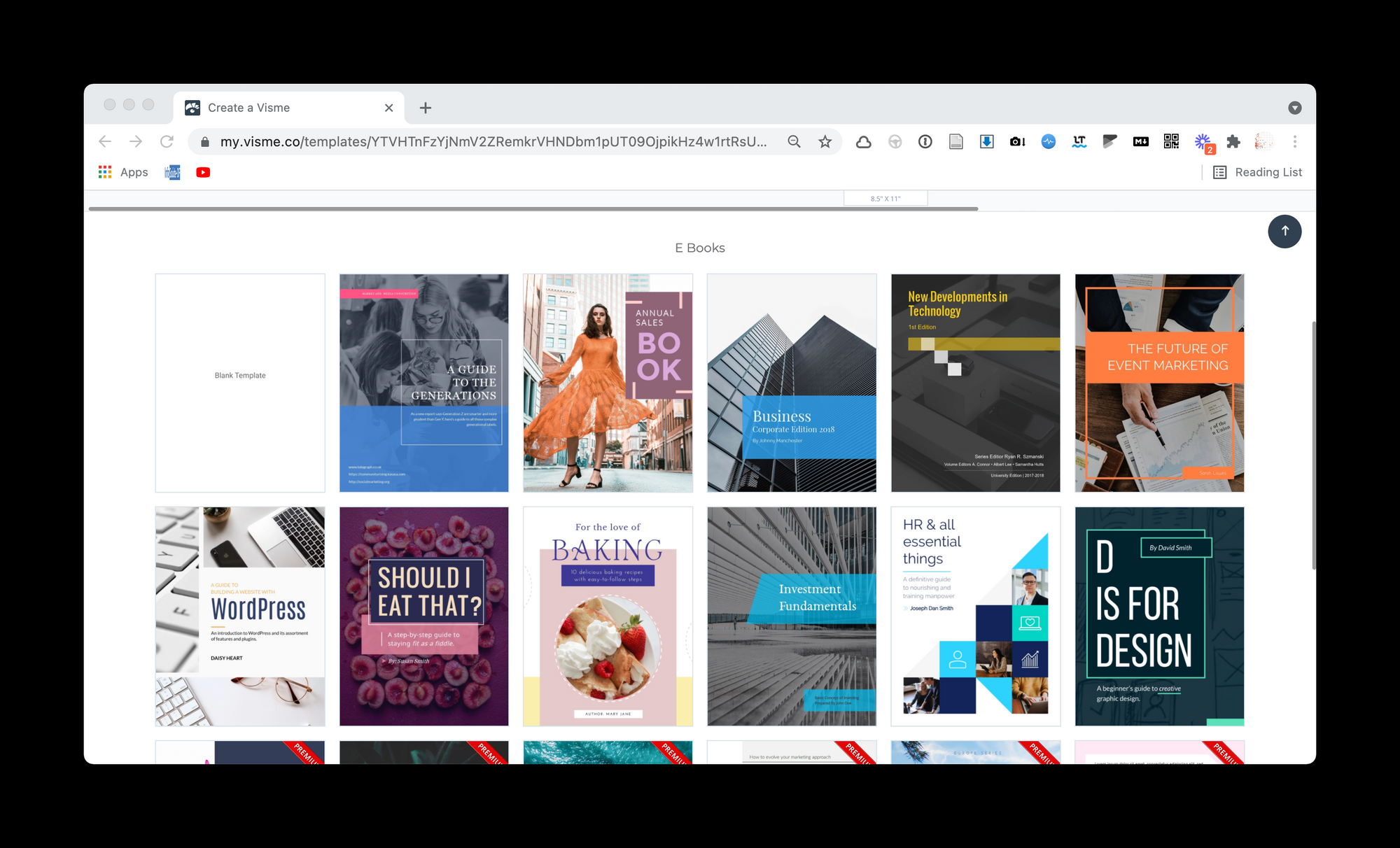
Or Crello It has a lot of diversity of models with good quality:


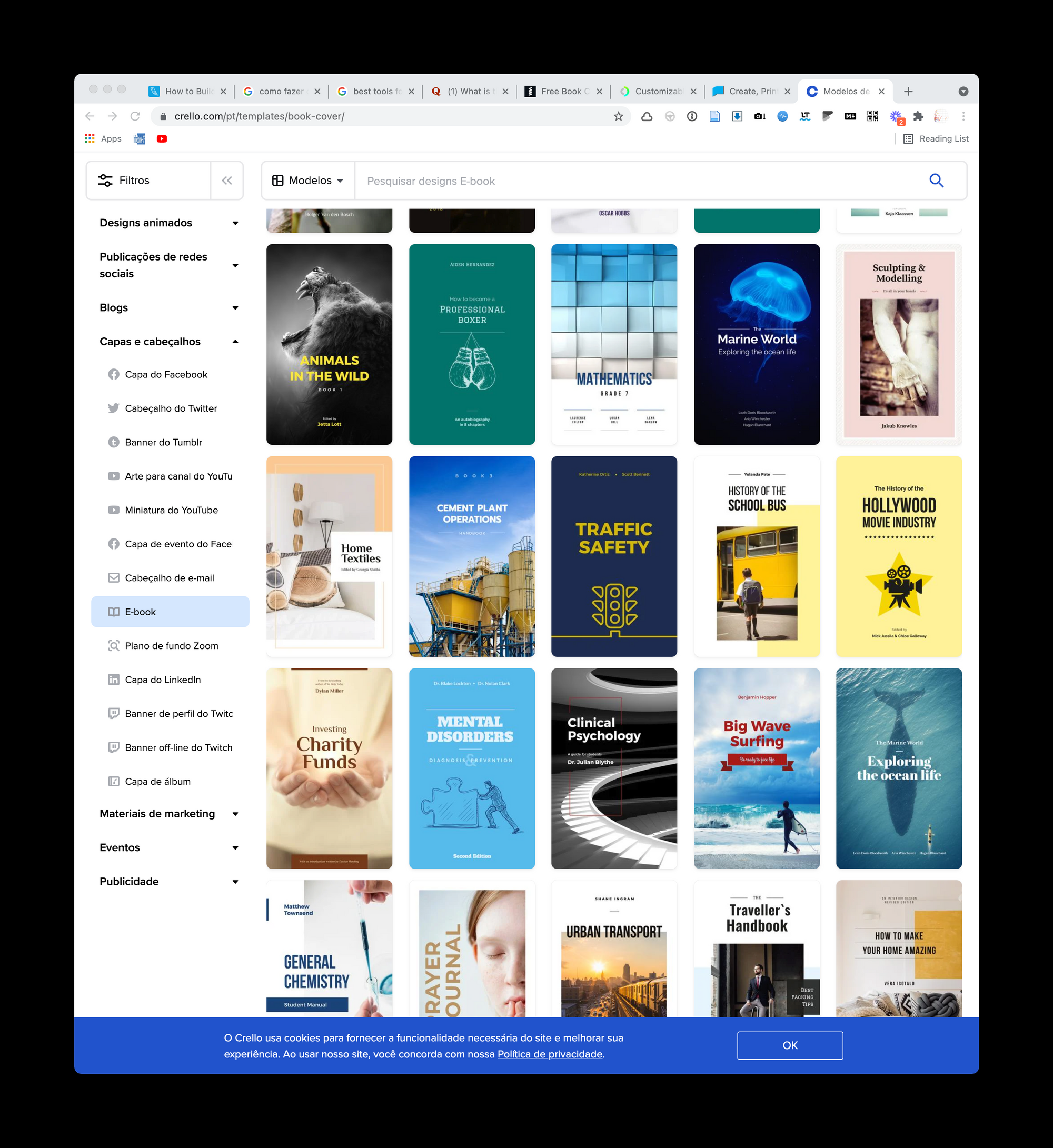
Or Creatopy It has a small but well-organized collection:
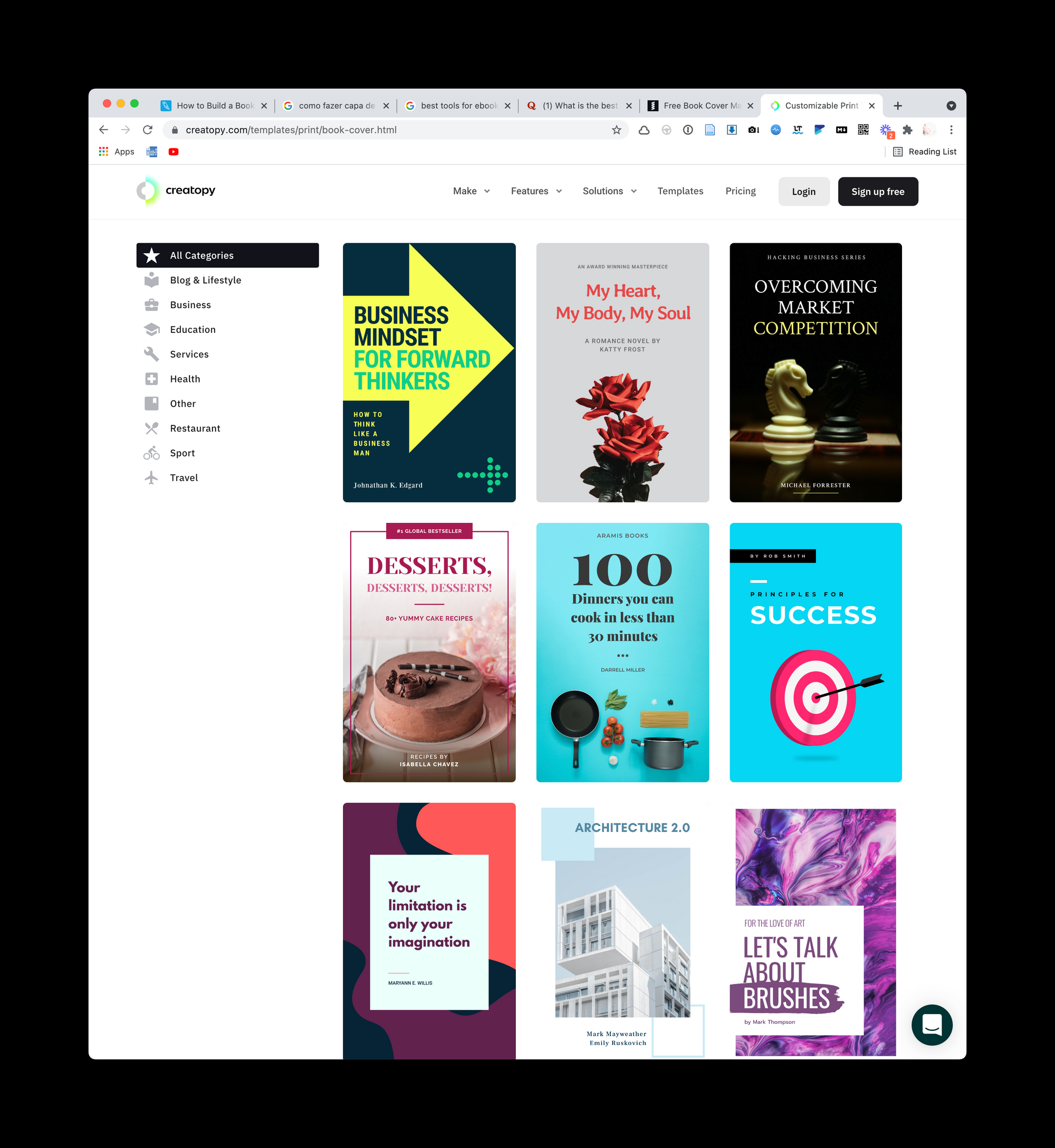

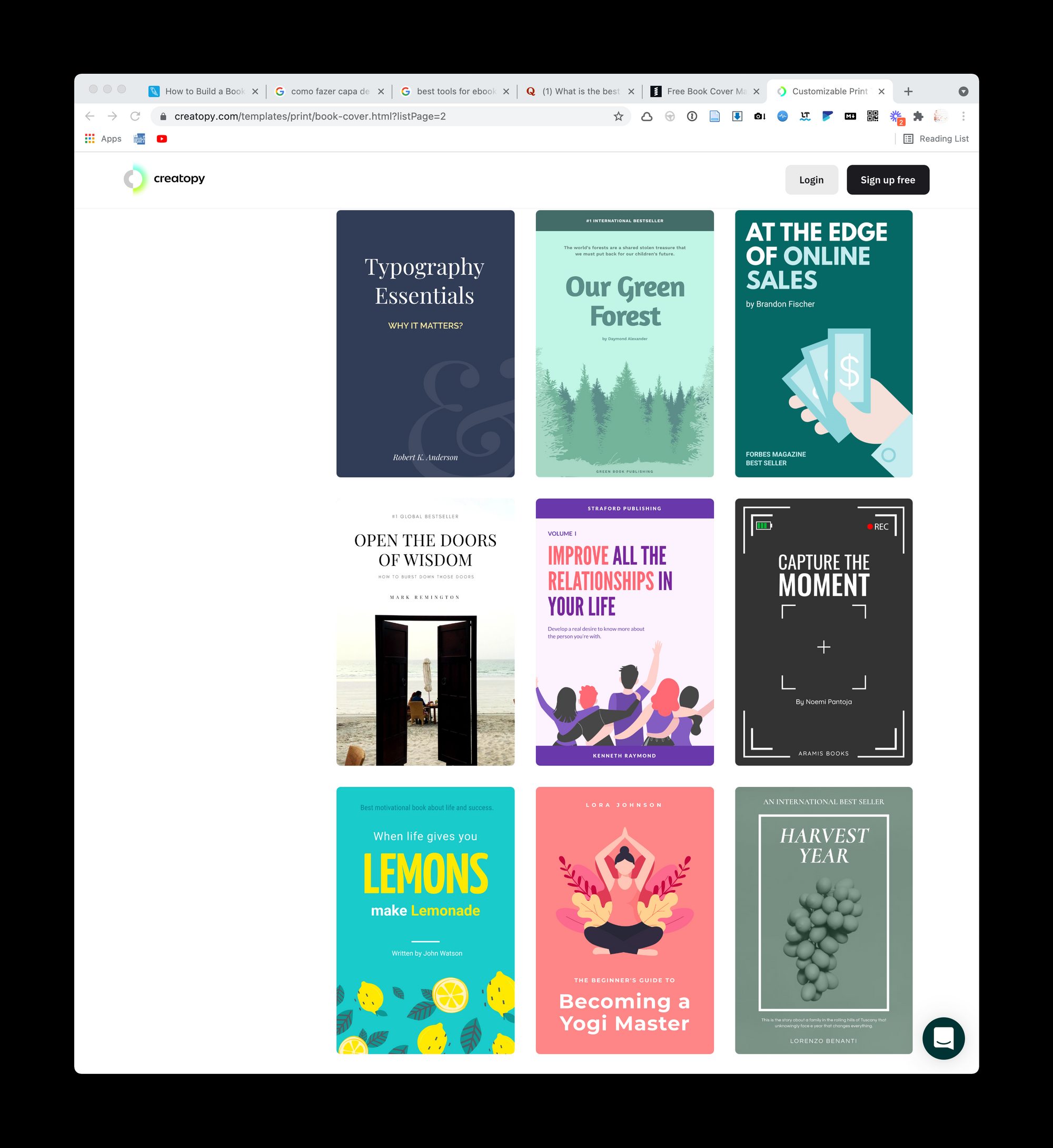
The Snappa It has, in my opinion, a lower quality look. It's as if their covers, for the most part, were adaptations of generic posts:

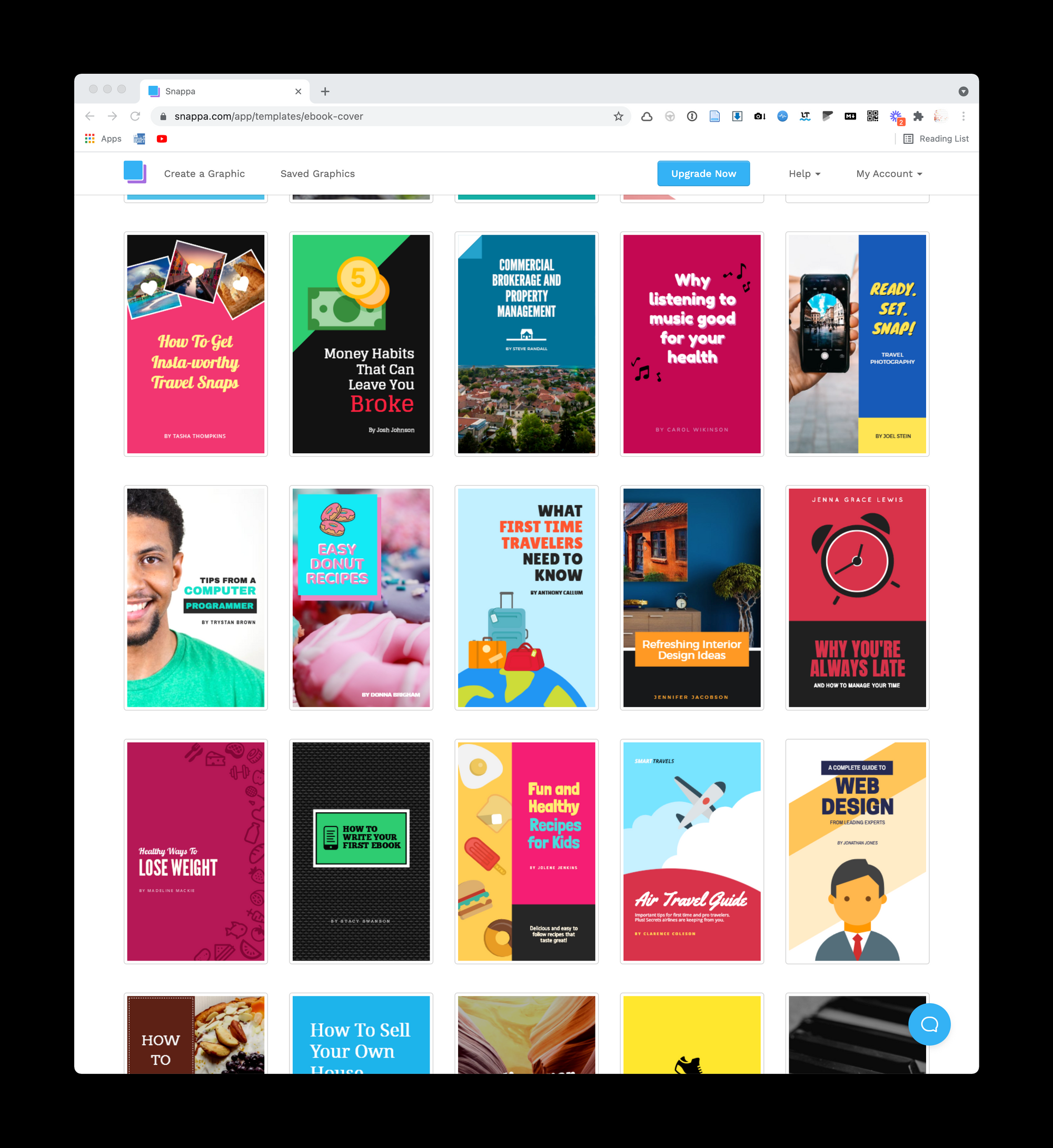

Or Pixelied It has a small collection, but it is worth mentioning. Perhaps because it is a newer alternative, the collection is growing, which is one more reason to follow this site:


In addition, I thought that the Fotor , Stencil , Designbold and Lucidpress have few options. Maybe it's not the focus of these tools.
Who knows, maybe this type of app already has so many clones that we've reached a point of saying that there is Canva and there are others. But When it comes to ebook covers, you just need to find a design that suits your taste . Therefore, having a list of applications can be good to take a look at different collections, as your choice can be in any of them.
How to make a cover for your ebook
List of apps for those who don't know (or don't want to) draw
Assuming that your book doesn't have to stand out for its beautiful cover (in fact, the goal is not to stand out for its ugly cover), what are the alternatives to make an ebook cover easily and cheaply?
The quick answer is by using Canva or any of its competitors.
I even tested some applications dedicated to creating ebook covers, but nothing compares to the usability that the Canva and its competitors have caught up. I think, however, that they all tend to offer templates aimed at fiction books, so my search for a more technical template was a bit frustrating.

One of my favorite apps is Dysigner , as its collection is huge. Digging through, you can find some very beautiful free templates:






The collection of the Visme It is small, but has some covers with a more corporate look. It's as if Visme's focus is on business reports, not so much ebooks:

Or Crello It has a lot of diversity of models with good quality:



Or Creatopy It has a small but well-organized collection:



The Snappa It has, in my opinion, a lower quality look. It's as if their covers, for the most part, were adaptations of generic posts:



Or Pixelied It has a small collection, but it is worth mentioning. Perhaps because it is a newer alternative, the collection is growing, which is one more reason to follow this site:


In addition, I thought that the Fotor , Stencil , Designbold and Lucidpress have few options. Maybe it's not the focus of these tools.
Who knows, maybe this type of app already has so many clones that we've reached a point of saying that there is Canva and there are others. But When it comes to ebook covers, you just need to find a design that suits your taste . Therefore, having a list of applications can be good to take a look at different collections, as your choice can be in any of them.
Exporting your Scrivener ebook in Markdown
How to turn long texts into small files for online publishing
Scrivener is among the most acclaimed text editors and this is justifiable. But, being a writing editor with formatting, what do you do when you want to publish on a platform with exclusive Markdown support?
The good news is that Scrivener has the functionality to export files (Files>>Export>>Files>>Export text files as .md). The result is that it turns each topic in your table of contents into a different file . The dialog screen is as follows:
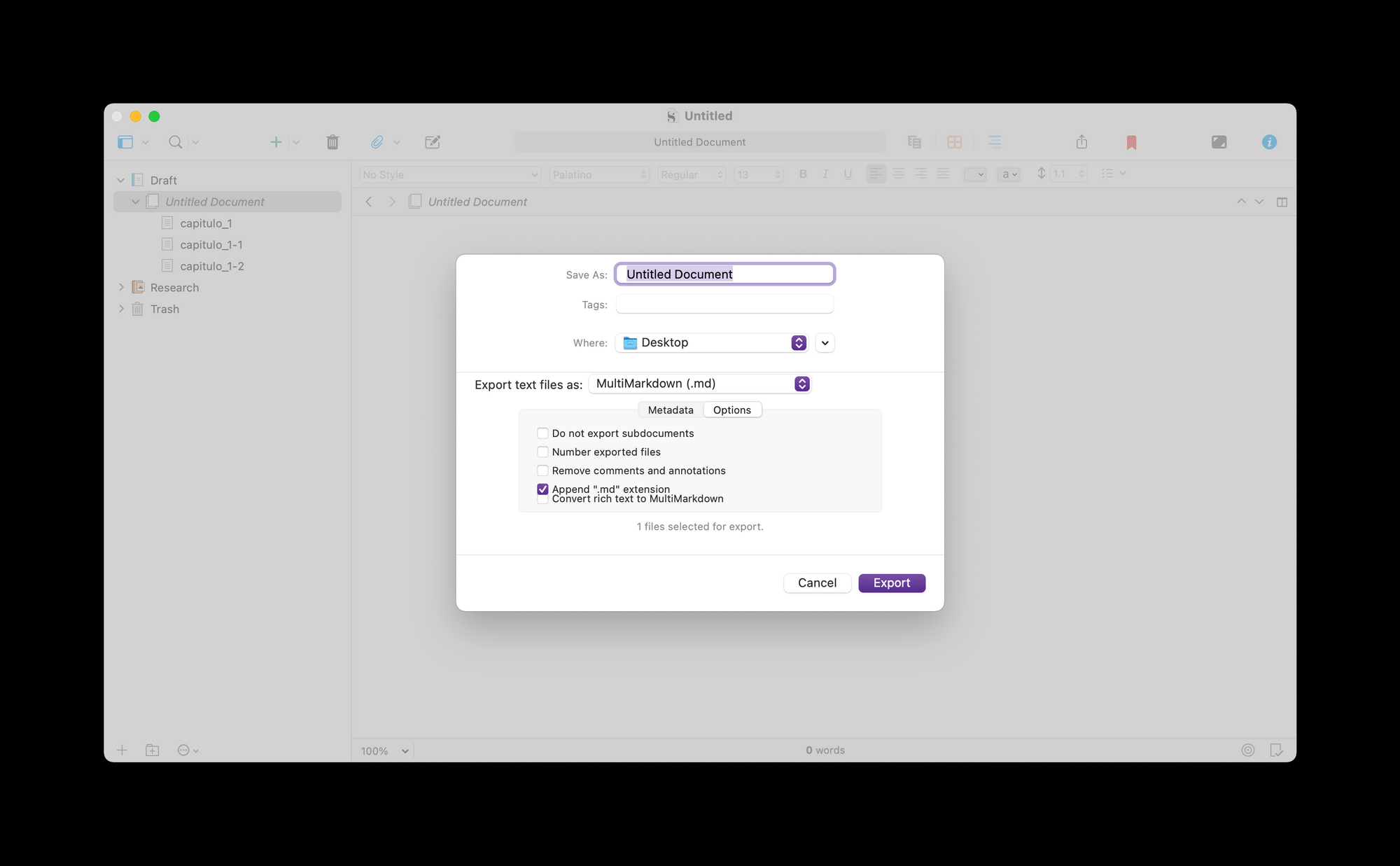
Specifically in my case I don't write much more on Scrivener, as I chose to use Markdown whenever possible. But I still use the tool to convert and process texts in some cases. One of these cases occurs just when I want to transform a large file into smaller ones manually , using Scrivener's "Documents>>Split" function.
As far as I know, the only other editor that has this function with manual activation is Ulysses. I also know that, for those who work with the command line in the terminal, it is possible to use the " GCSplit ". However, for sporadic editing, I don't think it's necessary to subscribe to Ulysses or venture into Linux commands.
The following video illustrates how you can do this by importing a large file into Scrivener, manually separating the new chapters with the "split" tool, and then exporting everything in Markdown with separate files.
With this approach, it is very practical to prepare chapters for publication in other tools, such as Leanpub. After all, in the free plan, Leanpub editing needs to be done through the browser, where there is no shortcut available for this. With this, if your book is small, perhaps the best way is to use copy and paste, creating each chapter also manually .
But if you have a large book or intend to do this task on a routine basis, preparing your publication with this approach may be more productive. This applies both to the full publication of the ebook on Leanpub, for example, or to the autonomous publication of chapters on your blog. For both scenarios you will have to fragment your text, so the routine is the same.
So, in addition to being a good editor, Scrivener also serves to prepare texts for publication, as it is designed to perform a part of your writing process only. This is the kind of functionality that, unfortunately, we won't see implemented in Word, as it's not a software designed to work in an integrated way with its other applications.
I've always considered Scrivener to be the best editor when it comes to importing. It is part of its value proposition to organize any large project from the import of several sources. This is enough for it to be as acclaimed as it is. But what we are seeing now is that the developers of Scrivener have not forgotten to also offer robust ways to export .
This makes the application a very versatile tool, whether for those who write within Scrivener or for those who use its features in the transformation of written texts in other environments.
Exporting your Scrivener ebook in Markdown
How to turn long texts into small files for online publishing
Scrivener is among the most acclaimed text editors and this is justifiable. But, being a writing editor with formatting, what do you do when you want to publish on a platform with exclusive Markdown support?
The good news is that Scrivener has the functionality to export files (Files>>Export>>Files>>Export text files as .md). The result is that it turns each topic in your table of contents into a different file . The dialog screen is as follows:

Specifically in my case I don't write much more on Scrivener, as I chose to use Markdown whenever possible. But I still use the tool to convert and process texts in some cases. One of these cases occurs just when I want to transform a large file into smaller ones manually , using Scrivener's "Documents>>Split" function.
As far as I know, the only other editor that has this function with manual activation is Ulysses. I also know that, for those who work with the command line in the terminal, it is possible to use the " GCSplit ". However, for sporadic editing, I don't think it's necessary to subscribe to Ulysses or venture into Linux commands.
The following video illustrates how you can do this by importing a large file into Scrivener, manually separating the new chapters with the "split" tool, and then exporting everything in Markdown with separate files.
With this approach, it is very practical to prepare chapters for publication in other tools, such as Leanpub. After all, in the free plan, Leanpub editing needs to be done through the browser, where there is no shortcut available for this. With this, if your book is small, perhaps the best way is to use copy and paste, creating each chapter also manually .
But if you have a large book or intend to do this task on a routine basis, preparing your publication with this approach may be more productive. This applies both to the full publication of the ebook on Leanpub, for example, or to the autonomous publication of chapters on your blog. For both scenarios you will have to fragment your text, so the routine is the same.
So, in addition to being a good editor, Scrivener also serves to prepare texts for publication, as it is designed to perform a part of your writing process only. This is the kind of functionality that, unfortunately, we won't see implemented in Word, as it's not a software designed to work in an integrated way with its other applications.
I've always considered Scrivener to be the best editor when it comes to importing. It is part of its value proposition to organize any large project from the import of several sources. This is enough for it to be as acclaimed as it is. But what we are seeing now is that the developers of Scrivener have not forgotten to also offer robust ways to export .
This makes the application a very versatile tool, whether for those who write within Scrivener or for those who use its features in the transformation of written texts in other environments.
Publishing an ebook in the Leanpub app
How to generate an ebook from a text in Markdown for free
Or Leanpub It is an eBook store that also offers a good service for writing and transforming texts into a format compatible with e-book readers. It's hard to say how much of its initial manifesto remains in the company's current version, but Leanpub remains faithful to the use of lightweight tools aimed at the immediate publication of your text .
This ends up attracting a community of STEM authors, especially considering that Leanpub encourages the use of version control tools that are used practically only by programmers. But would it be possible to publish a humanities book (or almost) on Leanpub? Yes, as long as you're willing to write in Markdown .
Even if you're not used to writing in Markdown, there are ways around this obstacle. The most natural option for this would be to use the Leanpub importer itself, which only requires that the formatting meets some Requirements . If you prefer to directly use Word itself installed on your computer, you will need an add-in. Unfortunately, the only native conversion add-in I know of, called Writage , is paid and only works on Windows.
If the alternatives described have not worked for you, it might be best to use Typora, which is a great editor and converter . Typora is available for all platforms and is free for the duration of its beta phase. The best thing about this option is that it can serve your entry into the Markdown world more comfortably, as it is an offline program with great usability.
Although I have Typora installed on my computer, as a Mac user, I had the option to install it as well PanWriter , a very powerful open source converter. In fact, I use PanWriter only for the long and complicated conversions. But for the purpose of this post, a simple and free Chrome extension will be used, which converts the text displayed in the browser into Markdown, called MarkDownload.
That is, there are converter options for all tastes and we will stay here with the simplest way for demonstration purposes.
Once you've captured the text in Markdown (whatever its source), it's time to paste the content into the Leanpub app. For this it is necessary to register and then Create a book . The free plan allows the creation of one hundred books, but does not allow offline writing, nor more sophisticated exports. In my view, the free plan is quite generous and sufficient for the demonstration of the Leanpub proposal. In fact, I consider that a plan limited to one hundred books is, in practice, unlimited.

Leanpub has great support for books in Portuguese and this is a huge advantage over options like Reedsy . Reedsy certainly deserves its own review, just the reference here that, despite being a great app, it is only good for books in English. It is very important to highlight this feature so that you do not find out too late that your choice does not have support for books in Portuguese.
Going back to Leanpub, right after creating the title and address of your book, the system will display the text editor screen. The interface is quite minimalistic and doesn't stop you from starting to write without thinking too much. The left bar contains the list of your book's chapters (1), the file upload tool (2), and a list of links to key points in the documentation (3). The top bar (4) indicates each of the author's activities of interest, among which I highlight the versioning tab, where you can find the version history of your book from the beginning of your writing process.
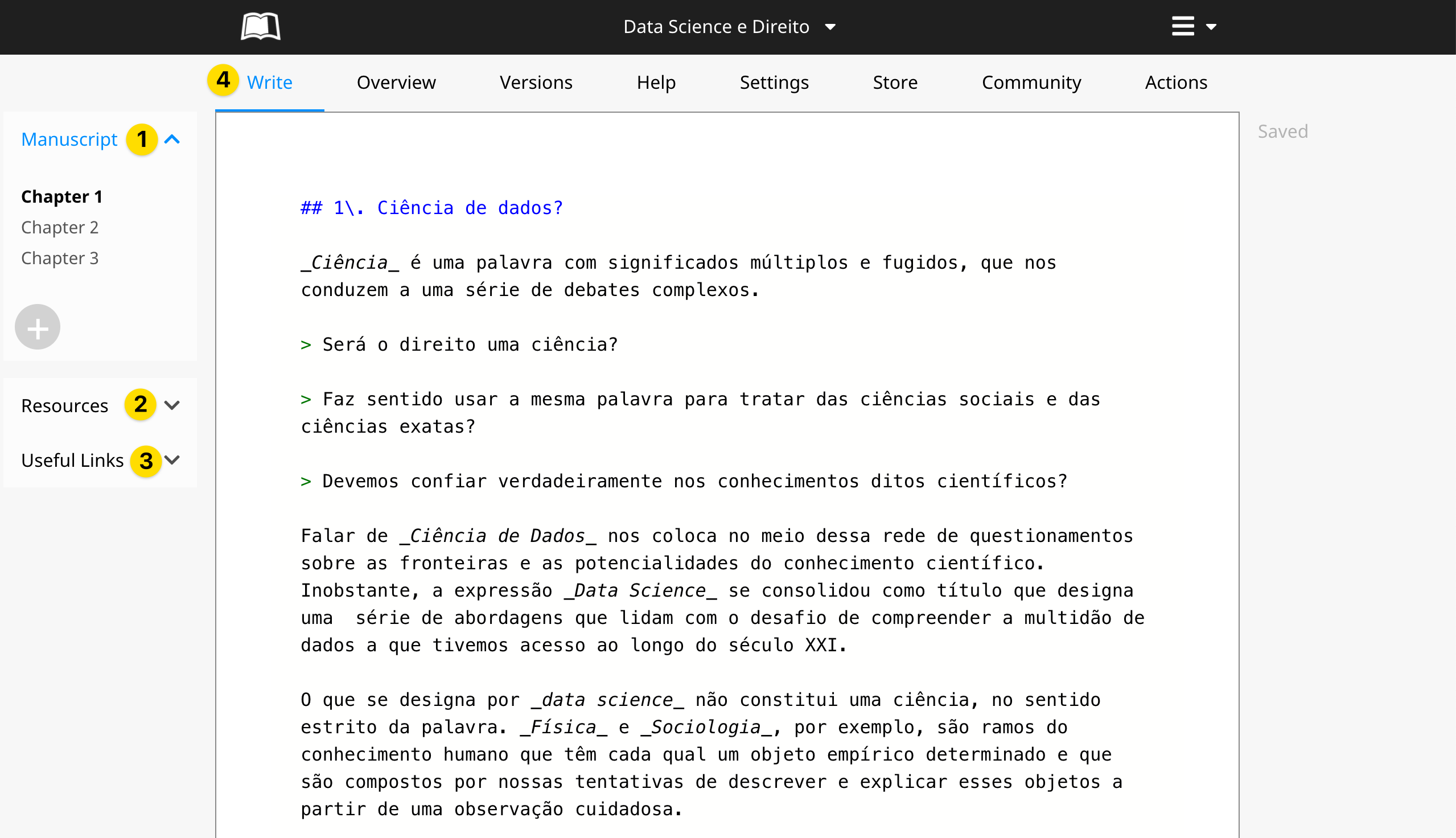
At this point you already get excited, because the book begins to take shape. But he also realizes that Leanpub requires the reading of several pages of documentation, as there are numerous features. This stems from the choices of technologies used, which, in turn, enable a very powerful and open platform. As an example, I list the options of the versioning tab.
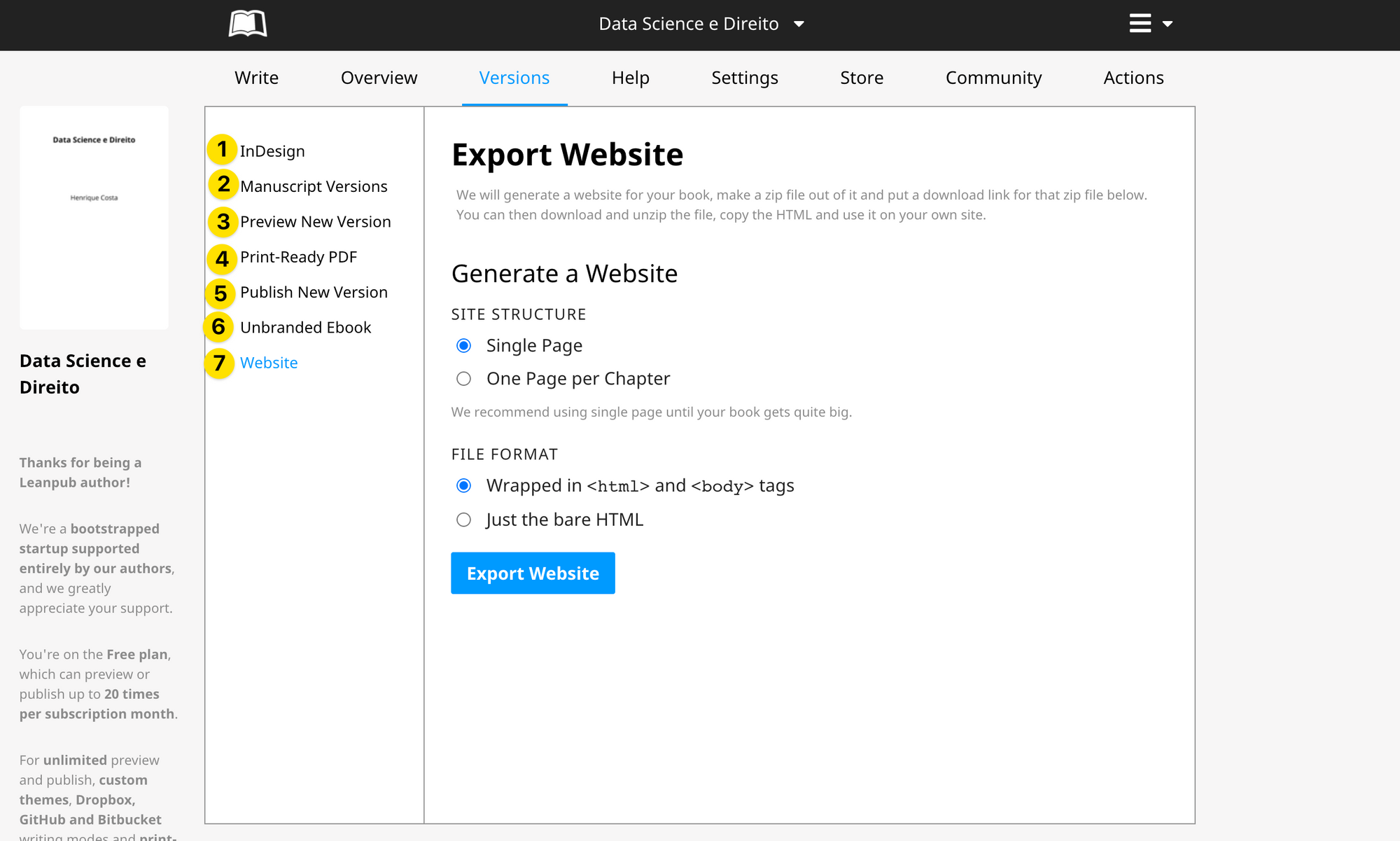
Exporting in InDesign format (1) is a function available only for paid accounts. I don't particularly see a problem with this, as basic edits can be done in Leanpub itself for free. What's at stake, for free users, is basically to prevent your book from being edited in Word , so editing within Leanpub already represents a step forward.
Editing in InDesign is really something that is beyond the reach of the free user as it has achieved its goal by avoiding using Word. That is our realistic goal.
As for the versioning itself, it is one of the pillars of the system (2), which makes Leanpub a great option for technical books that mature over time. For this reason, by way of example, Leanpub does not seem the best option for a novel (or any other type of writing) that is not improved throughout its editions.
About the closing of each edition, It only takes one click for Leanpub to generate new versions of your book in pdf, epub, mobi and also for online reading (3). The graphic quality of the system model is already very good and you immediately realize that it is a professional solution, which includes: catalog sheet, table of contents, pagination, header, styles, etc. All of this is generated quite easily.
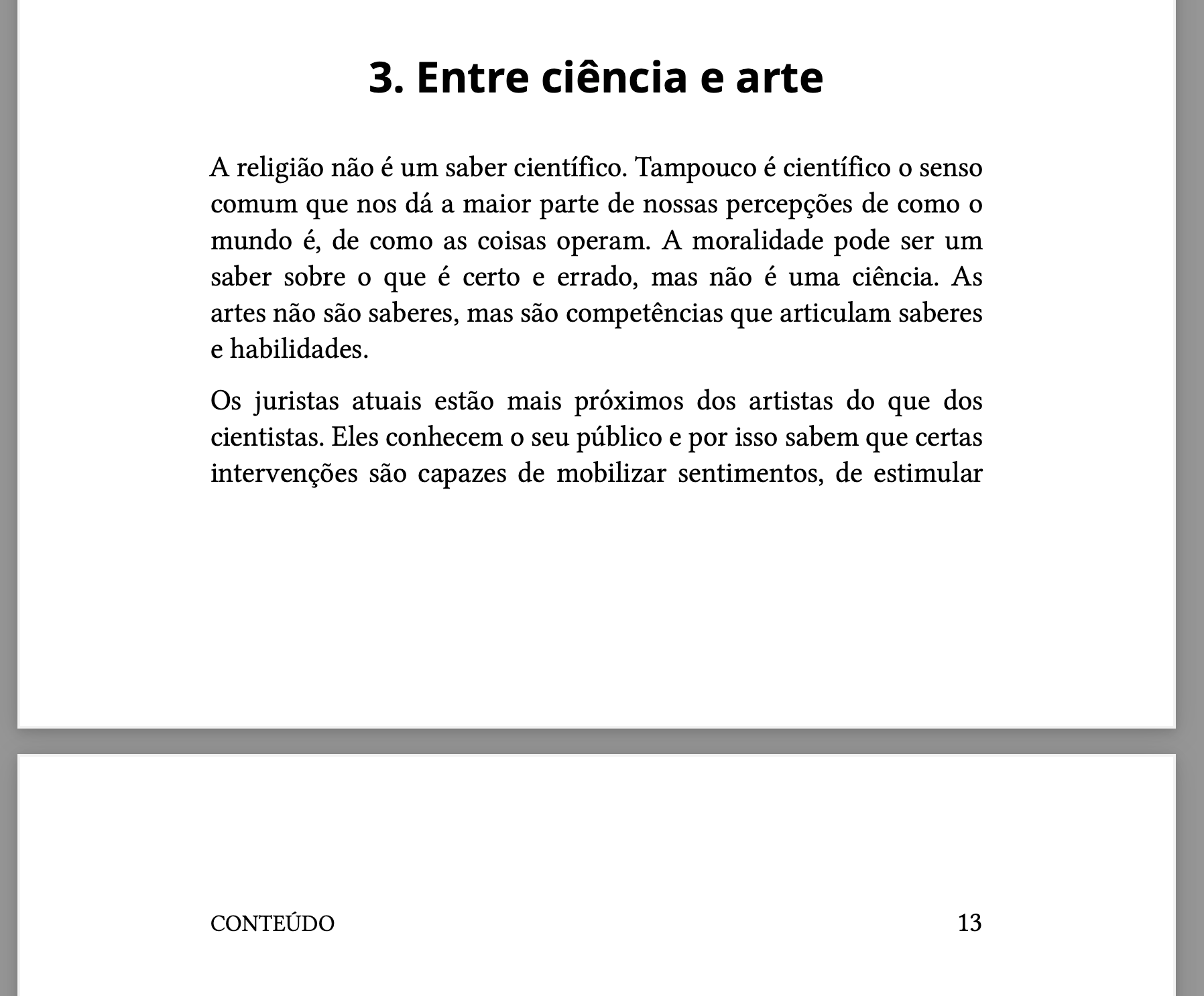
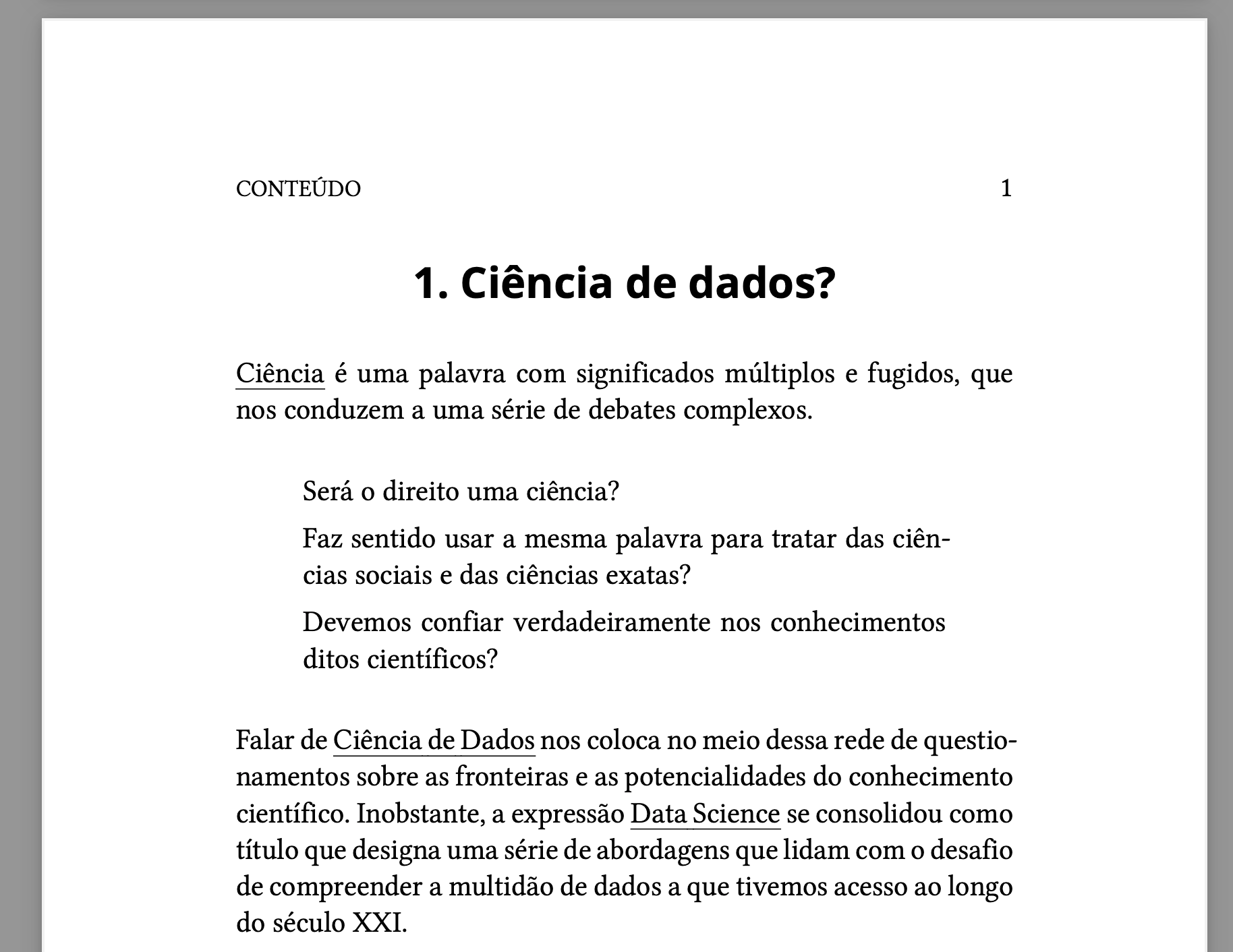
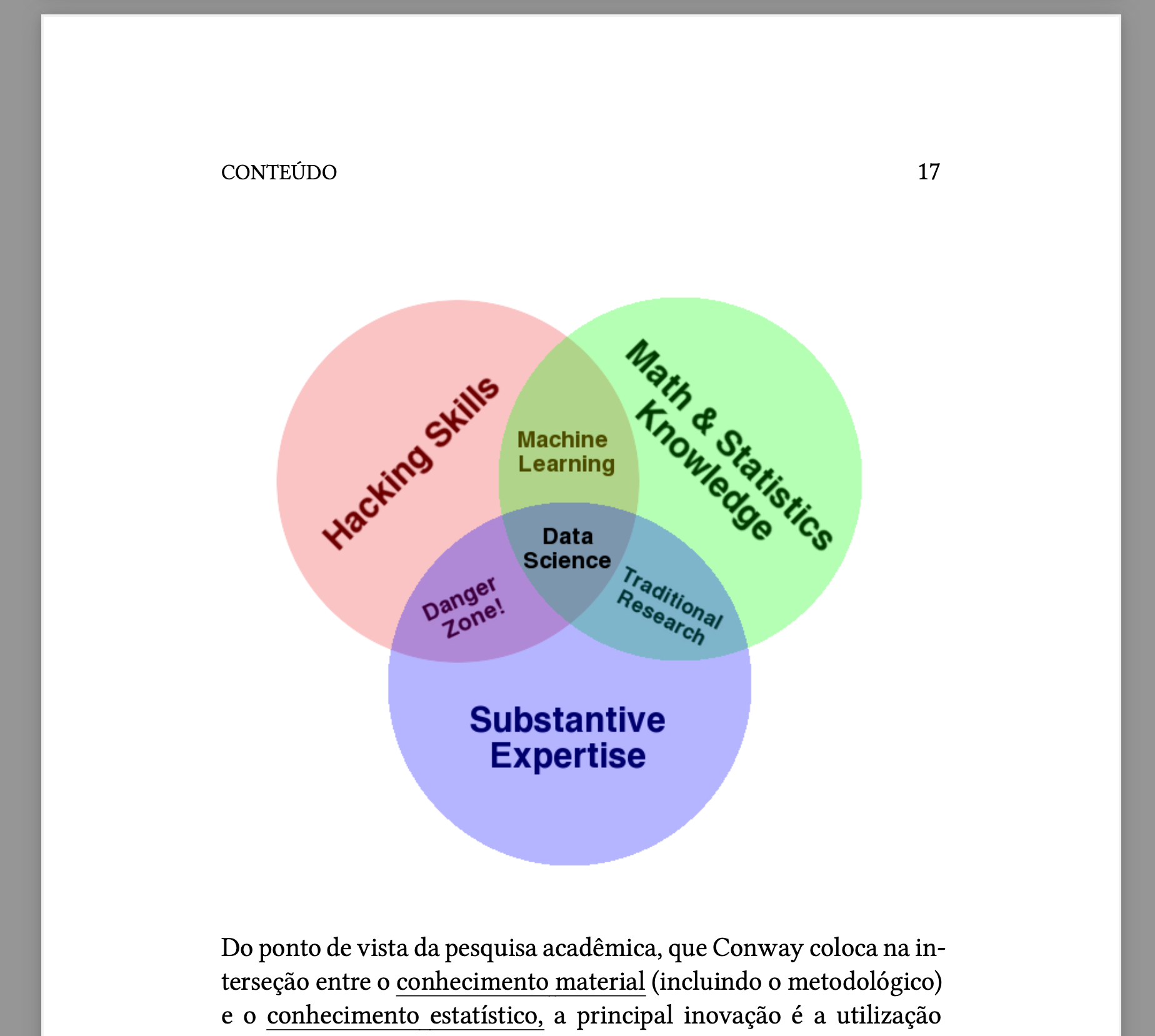
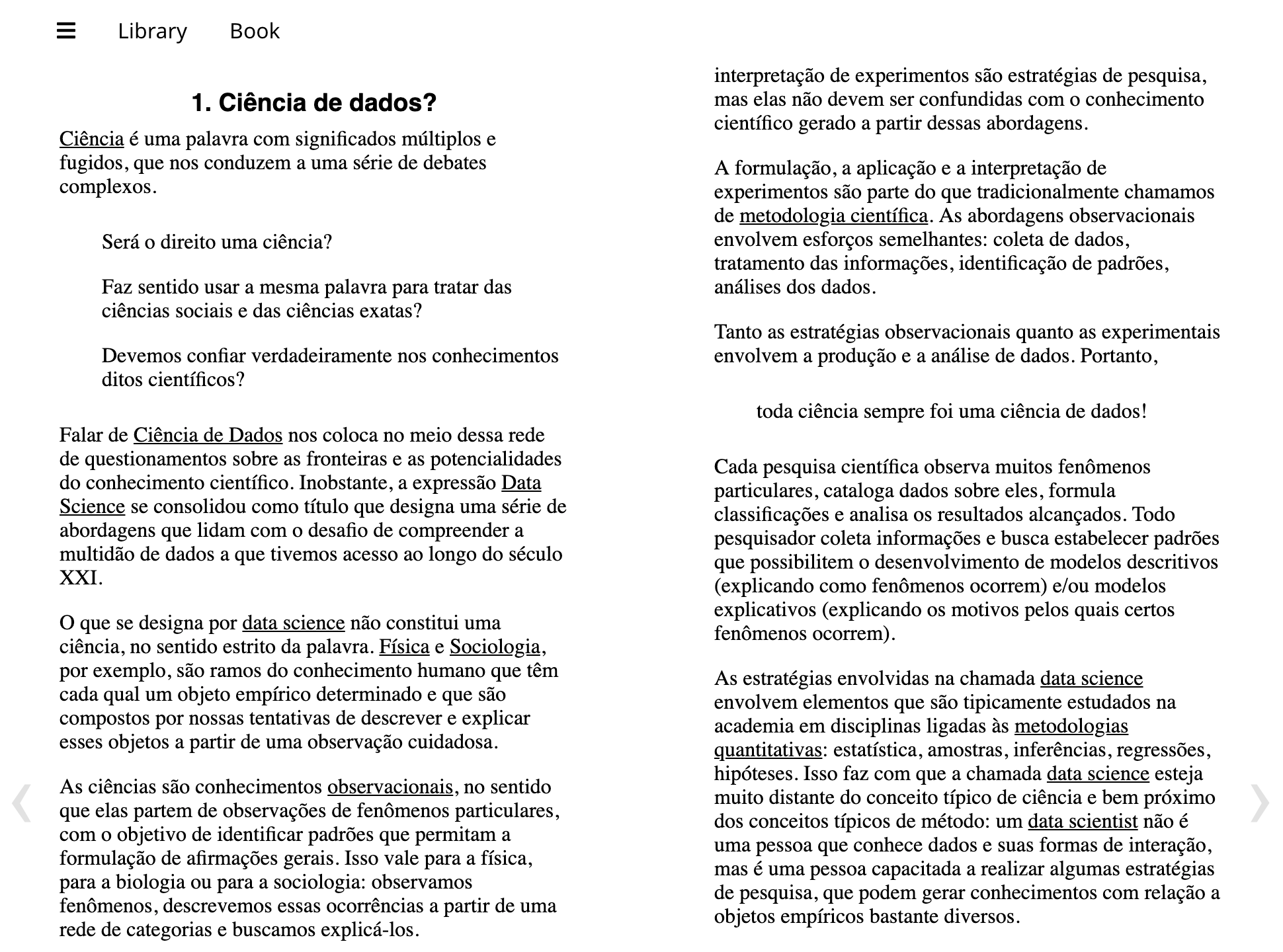
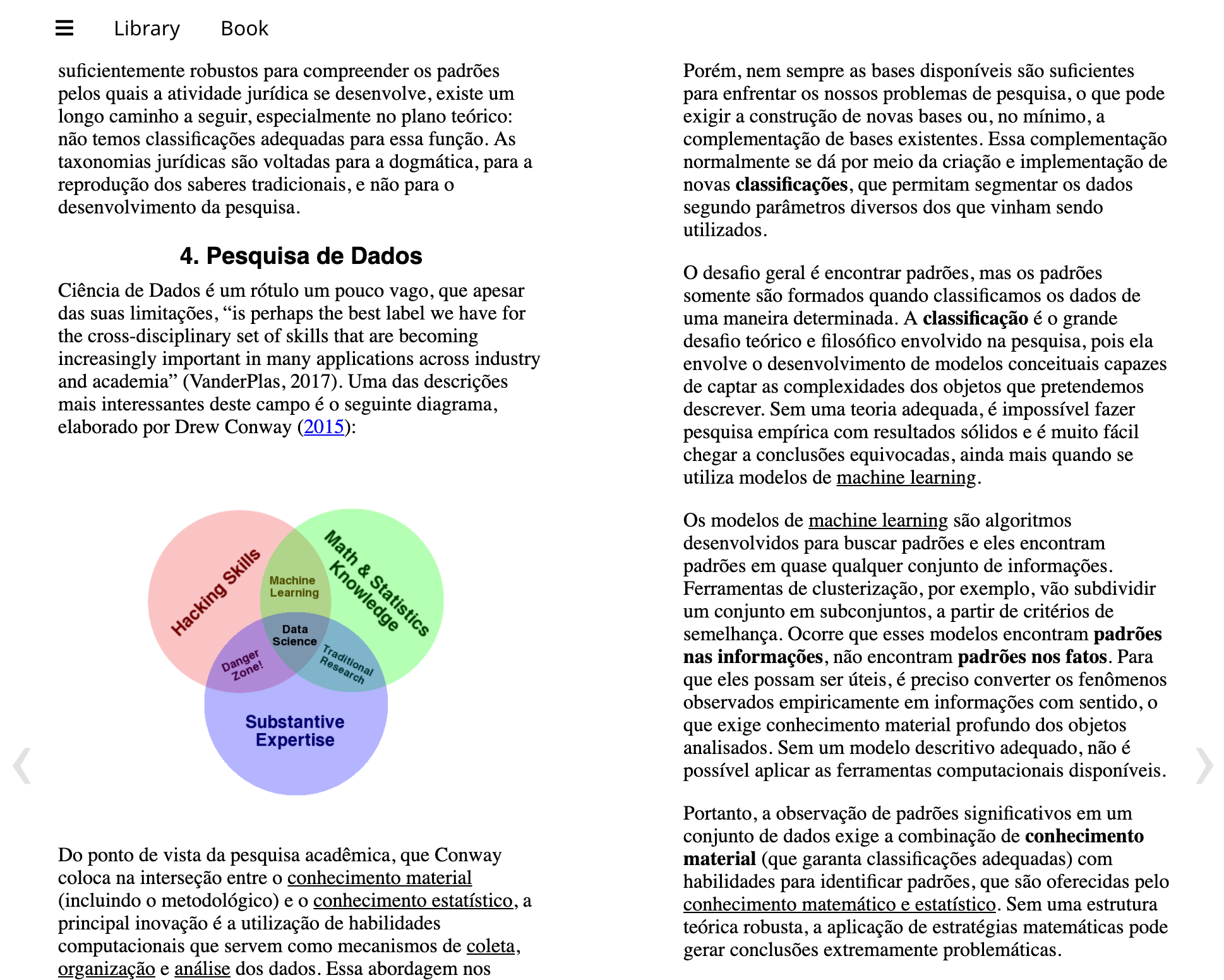
In fact, we often only think about these elements when we are going to generate an ebook for the first time, but the truth is that they are fundamental for the reader to realize the value contained in the book. Were it not for these elements, it would be more practical to simply generate the book in a document conversion application. Finally What we intend is that the book is not perceived as a mere document, but as a carefully crafted volume and composed of several pre-limb and textual elements as well.
Continuing the review, if option (1) of the versioning tab, previously mentioned, refers to professional layout in InDesign, option (4) is an editing alternative aimed at professional printing. With the print-ready format, the generated pdf can be printed or sent to services such as Lulu or Amazon KDP . This pdf version, whose purpose is to be transformed into a volume of paper, has some specific characteristics, such as: absence of cover, preparation of numbering and margins on front and back, etc.
Personally, I have no interest in this service, but its existence is a positive point and demonstrates that Leanpub does not intend to keep its book only within its digital store. For this same reason, the app offers an option to export your book without Leanpub's own branding (7) and even export the html itself.
It's really interesting how The application allows you to surgically replace some of the editorial activities, to the author's liking .
Alternatively, Leanpub can replace all phases of editing as well, from writing to selling, but it doesn't impose that on the author. Along these lines, it allows you to make the current version of the book public with just one click (6). Throughout this process, the app accompanies the entire publication routine with a checklist, reminding the author to include some marketing texts, notifications, ratings, and, of course, the price of the book. All of this will be part of the disclosure page of each publication.
Let's not forget that Leanpub is essentially a digital book store, although it also provides a free version of the editor. Therefore, here and there, Leanpub will give some push for the author to put his work up for sale. This does not negatively affect the writing process, which is quite reserved in the publisher's environment.
I was happy with the preliminary result of the publication, but I realized that it is important to also explore additional settings so that the best result is achieved. This is a subject for the next post, in which I will deal with subjects such as cover, indexing, ISBN registration, etc.
For now, what we have demonstrated is the feasibility of write a book in Markdown for free, putting the publication up for sale, or simply giving away your book without charging anything for it .
See you soon!
Publishing an ebook in the Leanpub app
How to generate an ebook from a text in Markdown for free
Or Leanpub It is an eBook store that also offers a good service for writing and transforming texts into a format compatible with e-book readers. It's hard to say how much of its initial manifesto remains in the company's current version, but Leanpub remains faithful to the use of lightweight tools aimed at the immediate publication of your text .
This ends up attracting a community of STEM authors, especially considering that Leanpub encourages the use of version control tools that are used practically only by programmers. But would it be possible to publish a humanities book (or almost) on Leanpub? Yes, as long as you're willing to write in Markdown .
Even if you're not used to writing in Markdown, there are ways around this obstacle. The most natural option for this would be to use the Leanpub importer itself, which only requires that the formatting meets some Requirements . If you prefer to directly use Word itself installed on your computer, you will need an add-in. Unfortunately, the only native conversion add-in I know of, called Writage , is paid and only works on Windows.
If the alternatives described have not worked for you, it might be best to use Typora, which is a great editor and converter . Typora is available for all platforms and is free for the duration of its beta phase. The best thing about this option is that it can serve your entry into the Markdown world more comfortably, as it is an offline program with great usability.
Although I have Typora installed on my computer, as a Mac user, I had the option to install it as well PanWriter , a very powerful open source converter. In fact, I use PanWriter only for the long and complicated conversions. But for the purpose of this post, a simple and free Chrome extension will be used, which converts the text displayed in the browser into Markdown, called MarkDownload.
That is, there are converter options for all tastes and we will stay here with the simplest way for demonstration purposes.
Once you've captured the text in Markdown (whatever its source), it's time to paste the content into the Leanpub app. For this it is necessary to register and then Create a book . The free plan allows the creation of one hundred books, but does not allow offline writing, nor more sophisticated exports. In my view, the free plan is quite generous and sufficient for the demonstration of the Leanpub proposal. In fact, I consider that a plan limited to one hundred books is, in practice, unlimited.

Leanpub has great support for books in Portuguese and this is a huge advantage over options like Reedsy . Reedsy certainly deserves its own review, just the reference here that, despite being a great app, it is only good for books in English. It is very important to highlight this feature so that you do not find out too late that your choice does not have support for books in Portuguese.
Going back to Leanpub, right after creating the title and address of your book, the system will display the text editor screen. The interface is quite minimalistic and doesn't stop you from starting to write without thinking too much. The left bar contains the list of your book's chapters (1), the file upload tool (2), and a list of links to key points in the documentation (3). The top bar (4) indicates each of the author's activities of interest, among which I highlight the versioning tab, where you can find the version history of your book from the beginning of your writing process.

At this point you already get excited, because the book begins to take shape. But he also realizes that Leanpub requires the reading of several pages of documentation, as there are numerous features. This stems from the choices of technologies used, which, in turn, enable a very powerful and open platform. As an example, I list the options of the versioning tab.

Exporting in InDesign format (1) is a function available only for paid accounts. I don't particularly see a problem with this, as basic edits can be done in Leanpub itself for free. What's at stake, for free users, is basically to prevent your book from being edited in Word , so editing within Leanpub already represents a step forward.
Editing in InDesign is really something that is beyond the reach of the free user as it has achieved its goal by avoiding using Word. That is our realistic goal.
As for the versioning itself, it is one of the pillars of the system (2), which makes Leanpub a great option for technical books that mature over time. For this reason, by way of example, Leanpub does not seem the best option for a novel (or any other type of writing) that is not improved throughout its editions.
About the closing of each edition, It only takes one click for Leanpub to generate new versions of your book in pdf, epub, mobi and also for online reading (3). The graphic quality of the system model is already very good and you immediately realize that it is a professional solution, which includes: catalog sheet, table of contents, pagination, header, styles, etc. All of this is generated quite easily.





In fact, we often only think about these elements when we are going to generate an ebook for the first time, but the truth is that they are fundamental for the reader to realize the value contained in the book. Were it not for these elements, it would be more practical to simply generate the book in a document conversion application. Finally What we intend is that the book is not perceived as a mere document, but as a carefully crafted volume and composed of several pre-limb and textual elements as well.
Continuing the review, if option (1) of the versioning tab, previously mentioned, refers to professional layout in InDesign, option (4) is an editing alternative aimed at professional printing. With the print-ready format, the generated pdf can be printed or sent to services such as Lulu or Amazon KDP . This pdf version, whose purpose is to be transformed into a volume of paper, has some specific characteristics, such as: absence of cover, preparation of numbering and margins on front and back, etc.
Personally, I have no interest in this service, but its existence is a positive point and demonstrates that Leanpub does not intend to keep its book only within its digital store. For this same reason, the app offers an option to export your book without Leanpub's own branding (7) and even export the html itself.
It's really interesting how The application allows you to surgically replace some of the editorial activities, to the author's liking .
Alternatively, Leanpub can replace all phases of editing as well, from writing to selling, but it doesn't impose that on the author. Along these lines, it allows you to make the current version of the book public with just one click (6). Throughout this process, the app accompanies the entire publication routine with a checklist, reminding the author to include some marketing texts, notifications, ratings, and, of course, the price of the book. All of this will be part of the disclosure page of each publication.
Let's not forget that Leanpub is essentially a digital book store, although it also provides a free version of the editor. Therefore, here and there, Leanpub will give some push for the author to put his work up for sale. This does not negatively affect the writing process, which is quite reserved in the publisher's environment.
I was happy with the preliminary result of the publication, but I realized that it is important to also explore additional settings so that the best result is achieved. This is a subject for the next post, in which I will deal with subjects such as cover, indexing, ISBN registration, etc.
For now, what we have demonstrated is the feasibility of write a book in Markdown for free, putting the publication up for sale, or simply giving away your book without charging anything for it .
See you soon!
Commenting tools to install on your blog
Comparison of Disqus alternatives and my experience with Commento
While there are several comment tool alternatives available on the market, if you've chosen to blog on Ghost (like this one), pretty much your only free option is the Disqus . But since it displays ads or charges $12 per month for the ad-free version, it's not my choice.
Disqus is quite complete, which is certainly a virtue. However, it may display so many features that your content takes a back seat. For instance Disqus has (1) a carousel to display your blog posts and advertising ; (2) an options box for emoji-style reactions; (3) a form to post your message; and much more. All of this is displayed before you see the comments themselves:

Disqus' leadership position is strengthened if we consider that there are few alternatives with a Portuguese interface . I imagine that the main alternative in Portuguese is the comment system of the Facebook . But I also imagine that if you're looking for an alternative to Disqus, you're most likely avoiding Facebook for the same reasons.
Although it does not have an interface in Portuguese, the Commentbox at least it's minimalist to the point that the language of the interface becomes something secondary. Plus, it's one of the few tools that offer a free plan (up to 100 reviews per month). Of course, we always think that our blog will have many comments, which is not always confirmed.
So starting with Commentbox is a smart strategy, especially if we consider that it allows you to install a free, lightweight and beautiful solution in "five minutes". None of the alternatives I tested were as easy to install.
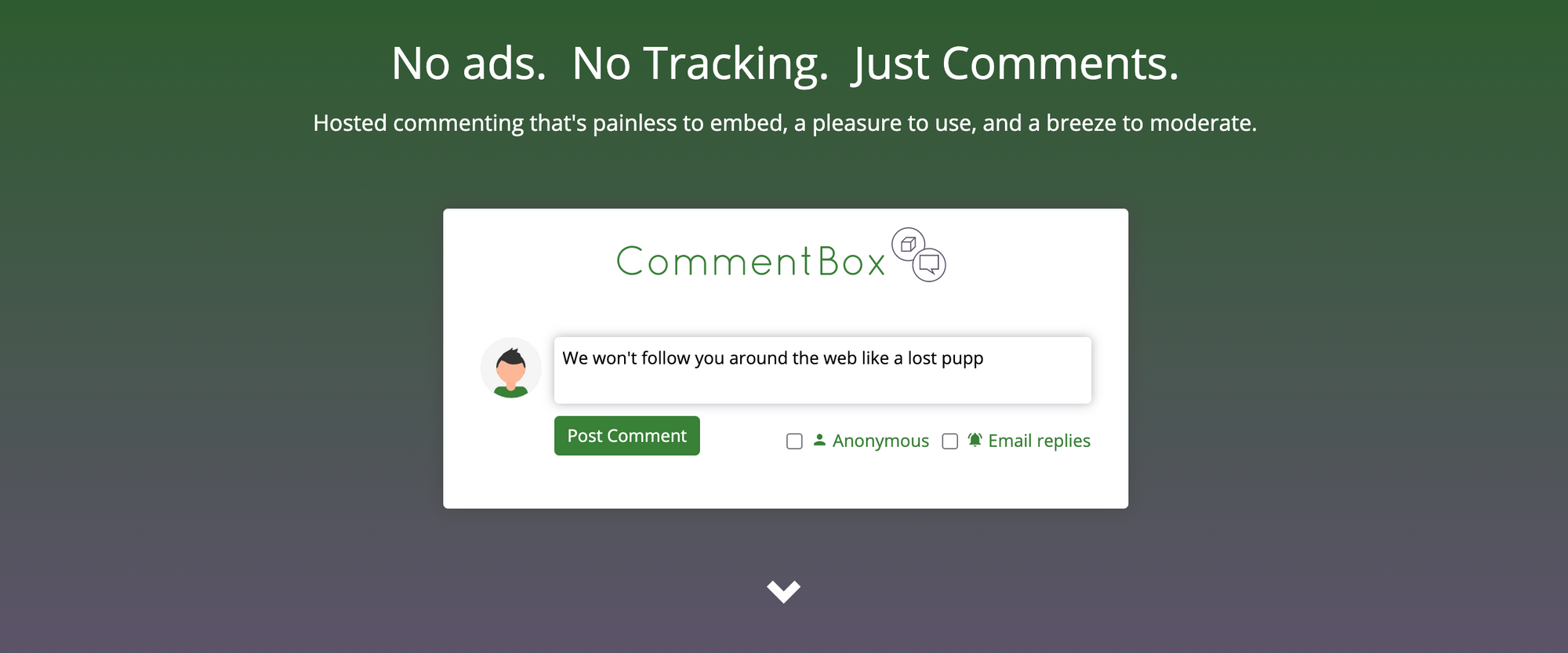
If you prefer to keep the installation of an open source minimalist tool, the best option seems to be the Remark42 . What stands out about this alternative is that the support for translation is very prominent in its proposal . As far as I could research, it is the only open source alternative with support for sixteen languages. Unfortunately, no one has yet contributed to the Portuguese translation, but this is the closest we've come to having a commenting tool that is truly open to multiple translations.
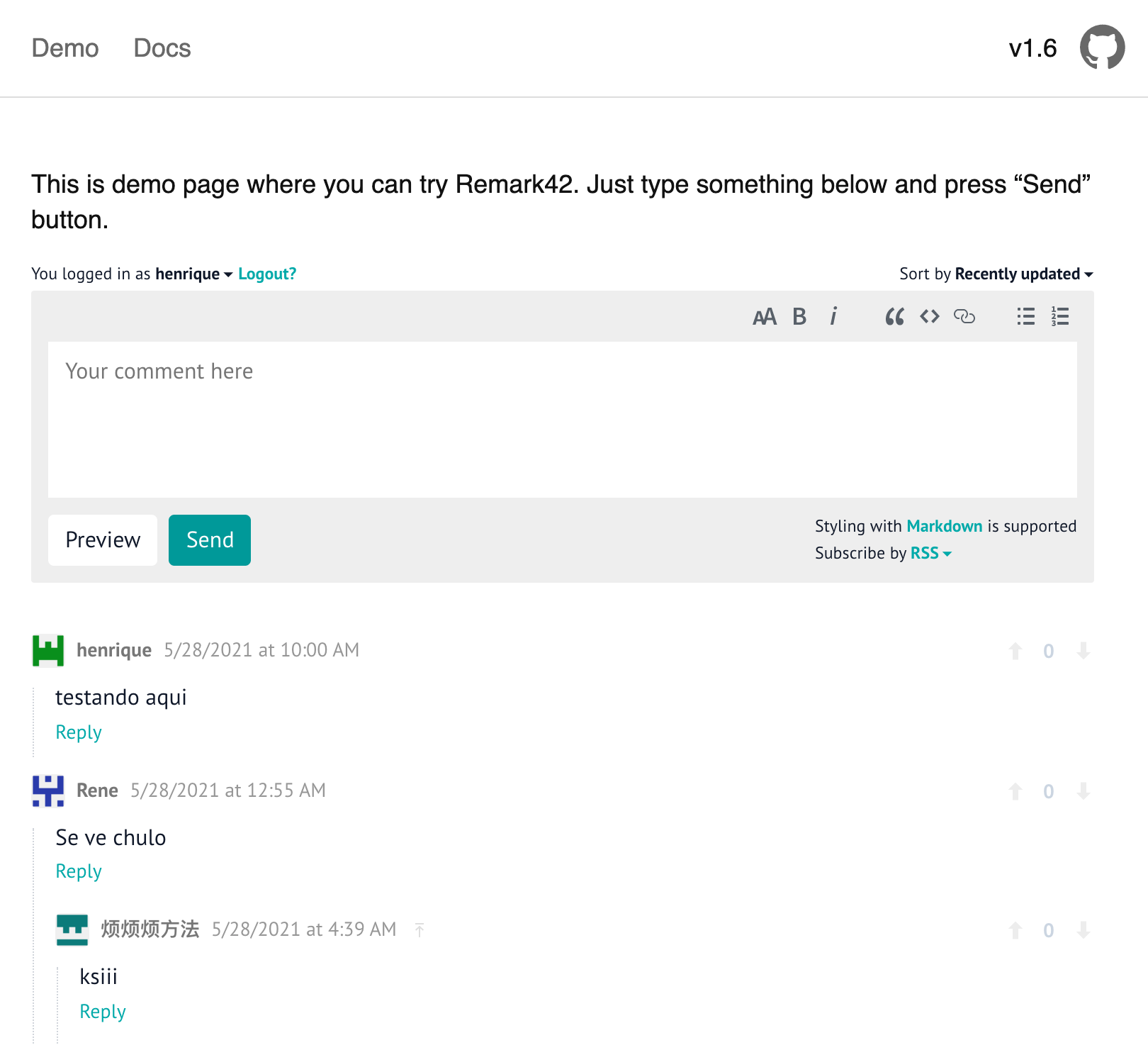
With regard to Ghost, in recent times, an exclusive alternative for the platform, called Cove . It's a very neat solution, especially since it's integrated with Ghost. As a result, it does not require an additional login and offers the best experience I have found. But this comes at a price, which is approximately USD 10 per month. My impression is that Cove is the best solution for those who are making money with their blog and, therefore, makes a point of offering the best experience available.

Many Ghost users use the Hyvor Talk looking for a cost-effective solution, with plans starting at $5 per month. Personally I don't like the look of the app in the standard version, but it seems to be a robust option. Perhaps it is a suitable option for those looking for a more informal and fun look.
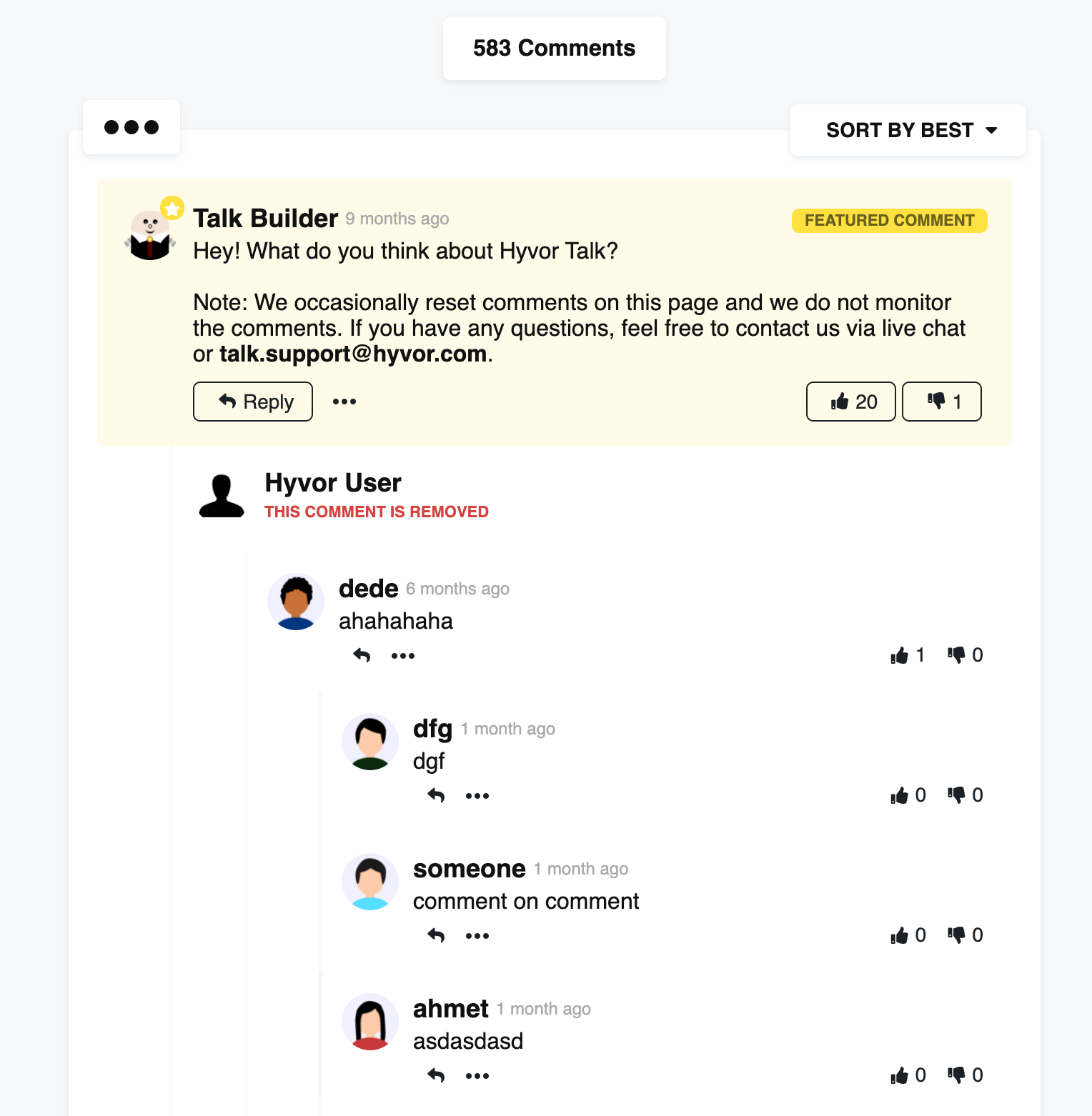
In the same price range, there is the FastComments , which has a more neutral look and support for automatic translation in seven languages:
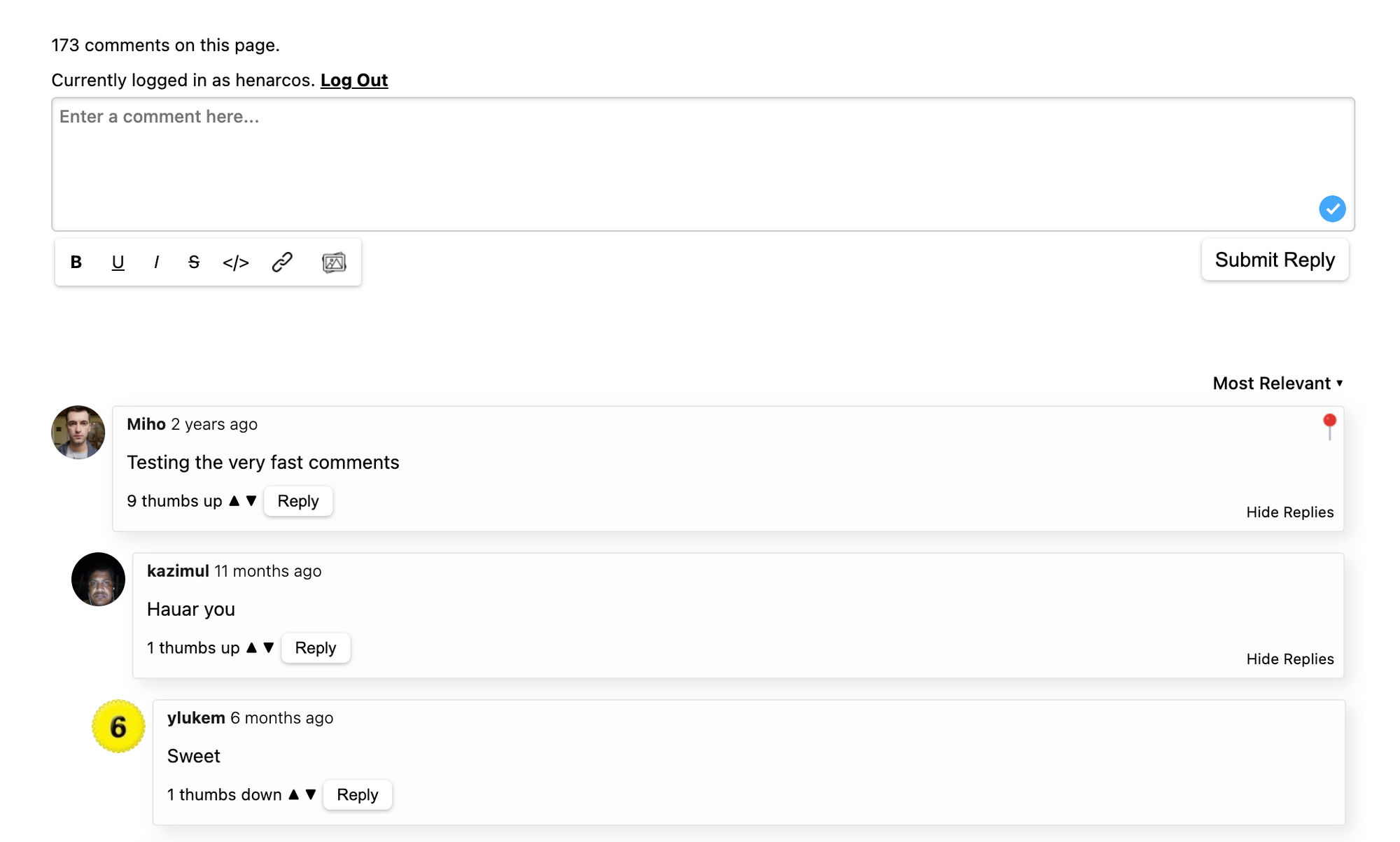
For those considering also maintaining a forum (in addition to the comment tool itself), or Talkyard Offers a hybrid solution (comments and forum in one product) at a competitive price . The app costs just over USD 2 per month. I haven't tested Talkyard, but I was very curious, because it has a very different proposal of the competition, in addition to being open source. To get an idea of the price of a more traditional competitor, the Muut costs a minimum of USD 16 per month and offers a similar tool.
Talkyard's proposal is very honest in recognizing that You'll only need a forum the day your community no longer fits in the blog comments . Just for honesty makes you want to test the product. Another interesting aspect is that it follows the look of Discourse, which is the main tool for more robust forums. Unfortunately, it is also similar to Discourse in its use of features, as they are robust forums, and not mere commenting tools.
This ends up making hosting open source Talkyard very expensive, to the point that it is likely to become a deterrent to its adoption. In contrast, the paid plans, offered by Talkyard itself, are quite affordable and perhaps installing the service on your own server is not the cheapest option.
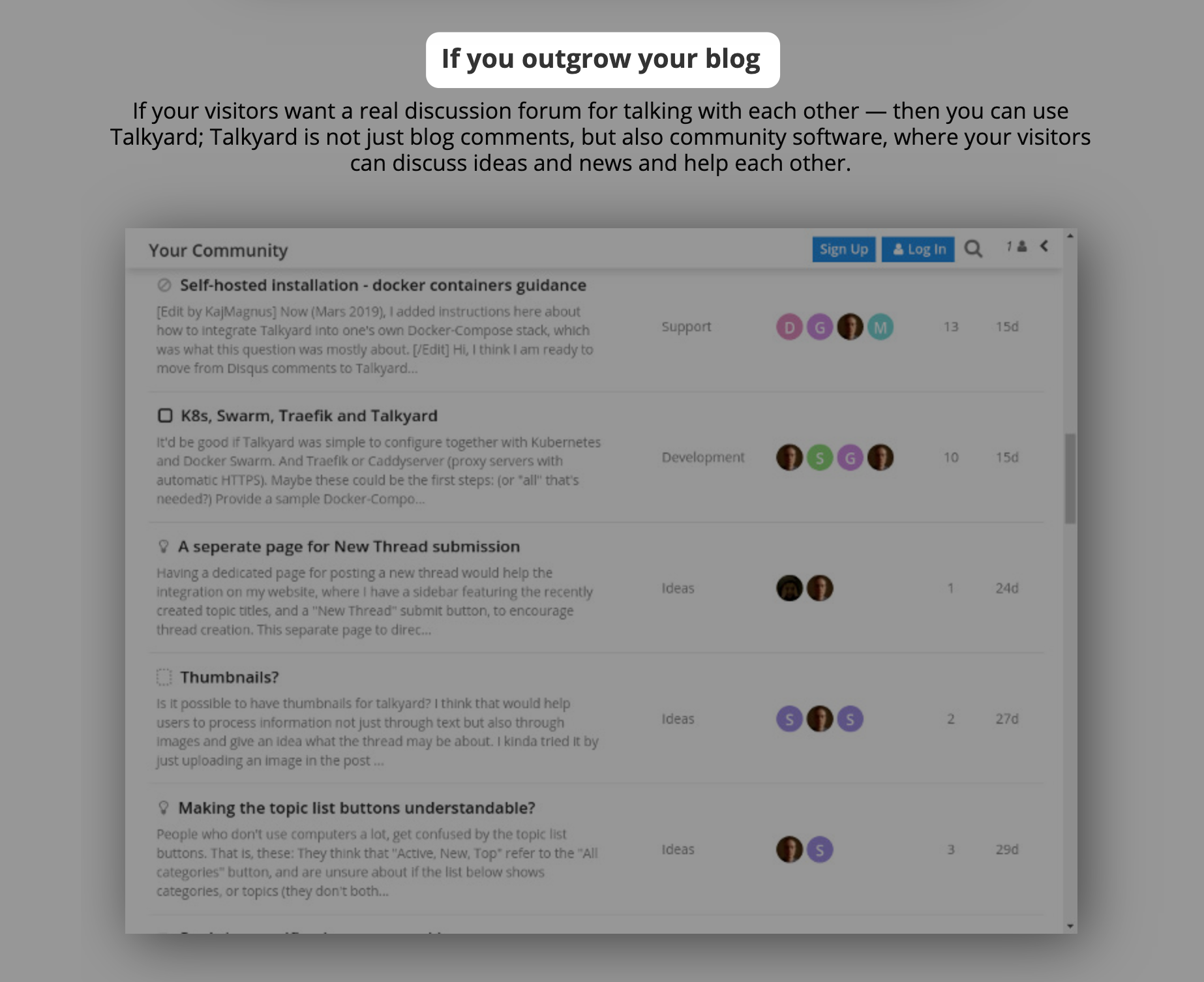
For a while, after considering all these options, I even used the Commento . I really like the look and performance of the tool. But its open source maintenance turned out to be costly, especially since installation requires a lot of configuration. Even the Simpler guidelines that I found still require the mastery of several prerequisites. That's why I don't see Commento as a very convenient alternative for most people.
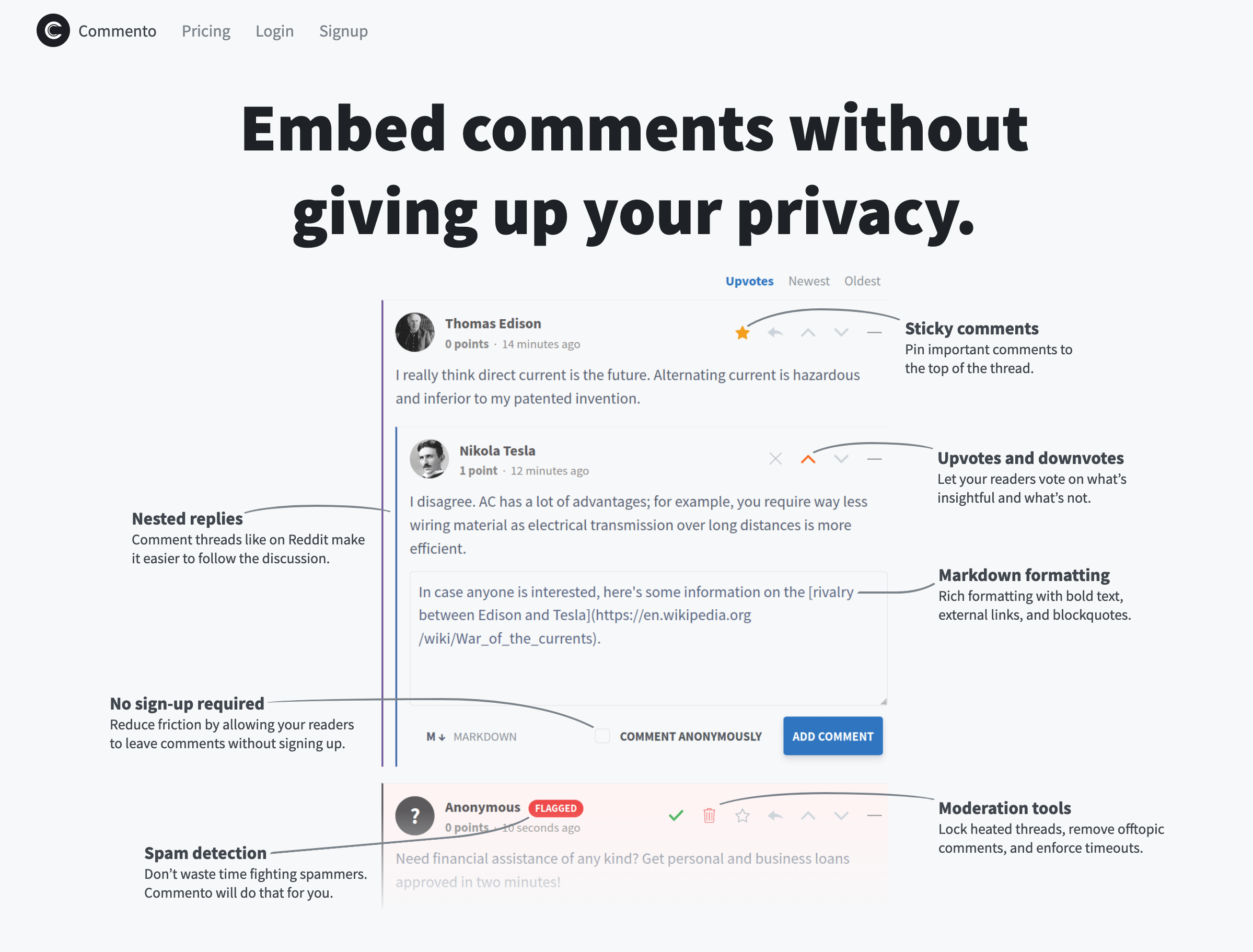
In addition, in the open source version, you are not exempt from maintaining an email notification service. Thus, maintenance ended up being high and Today I no longer use the tool.
Despite the help provided by the community, you are likely to encounter mishaps in the installation of Commento. What I mean is that it is not enough for the application to be open source. It is also necessary that its installation does not represent a barrier, both in terms of cost and in technical terms. And what I realized is that the installation of Commento is really complex for a layman.
The alternative to installing and maintaining the app, by your own means, would be to subscribe to Commento's service, which costs $10 per month. The value is in line with what competitors charge, but for me it is still expensive:

Another unfavorable point of Commento is that it does not have a Portuguese version. The worst thing is that I really don't see a prospect that the product will be translated, because the developer has already said that this is not a priority for him. We know that there are advantages and disadvantages of using software from an independent developer. In this case, his lack of interest in Portuguese can create an insurmountable barrier for potential users.
The only thing that is certain is that as much as I feel that my search is not over, I no longer need to go back to Disqus . And that already satisfies me.
The Once-in-a-Lifetime Proofreading Tool
ProWritingAid is an alternative to Grammarly, only more expensive. Valley?
If you're going to write your term paper (or even a dissertation), in some way, it's something you'll do "once in a lifetime." And that's pretty incompatible with subscribing to a review app that covers you every month.
If this is your case, I think it's worth using the trial of ProWritingAid , even if it is an application without support for Portuguese. It's just that ProWritingAid has some very interesting proofreading reports that work regardless of language, especially the one that finds repeated sentences and the one that measures the fulfillment of sentences .
This alone puts your text on another level, as it prevents the repetition of periods and words in several passages, in addition to alerting you to paragraphs that have become incomprehensible due to their length. The tool's website describes these features as follows:
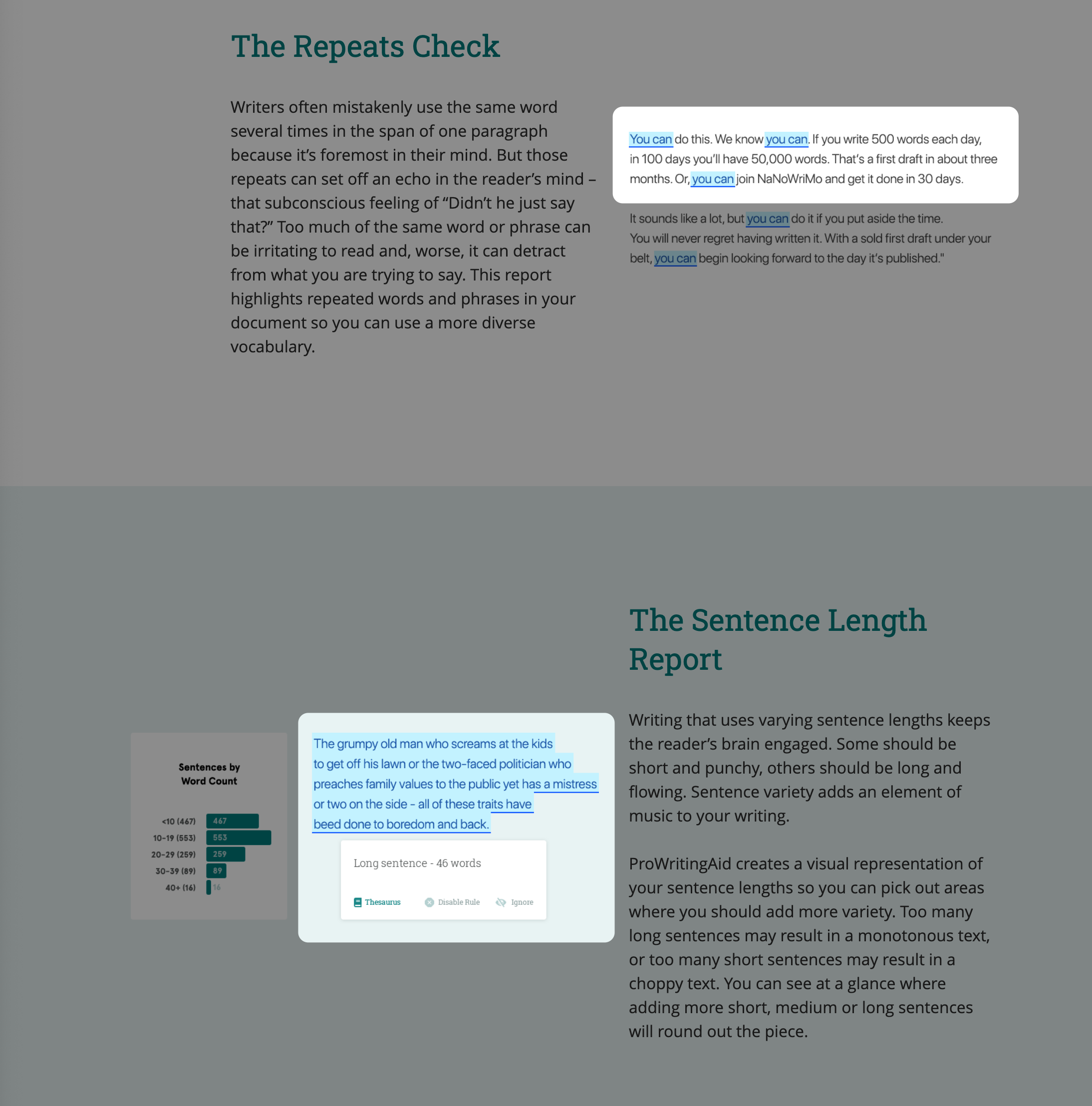
But see that my advice is to use the trial , since the purchase has a very eloquent opposing argument: the price. If you only subscribe for one month, you'll spend at least $20. And that doesn't include the search for plagiarism, which in any case would be of almost no use, since the tool only checks for plagiarism in English.

So the recommendation I make is that you use it only once in your life, because the writing of your monograph is a very important moment not to have a review. If you want to make frequent use of a similar and free tool, the Hemingway It is the most suitable option, as long as it is for quick checks. I reinforce that ProWritingAid has the differential of offering more robust reports than the competition and that, in my view, it has a unique approach to the problem it seeks to solve.
Does this apply to those who write in English? No. After all, for those who write in English, there are cheaper alternatives with good skills, such as Ginger or PerfectIt or Linguix or Trinka and the Grammarly , which is the market leader:

And what are the free options for Portuguese? There will always be Word, which doesn't charge you anything more for a spelling and basic grammar review. In the same way, there is Chrome, if you type in the browser. In addition, Microsoft is investing in the Publisher , a real threat to all the programs I mentioned, mainly because it comes included in the Microsoft 365 package with the same features as the paid alternatives.

Thus, Microsoft Editor's mission seems to be to kill Grammarly, keeping the Office empire free of threats. And only Microsoft can organize itself to the point of offering a robust product to the Brazilian market, considering the current price of the dollar, its tradition and ubiquity.
Meanwhile, the LanguageTool It runs on the outside, offering a solution that theoretically works in Portuguese, but that seems a bit limited to me. The operation of the extension itself and the review board is very good, but the suggestions don't add much to me.
In summary, For those who write in English, the flagship of paid tools is a revision that goes beyond spelling and grammar , including clarity and style suggestions. The selling point of all of them seems to be one and quite terrorist: "don't send an inappropriate email to your boss, because it would cost you even more".
For those who write in Portuguese, the threat is even greater: there is still no great option. For now, the way out for Microsoft users is to continue using Word and Editor. And for those who write in the browser, you can use Chrome's corrector or LanguageTool, despite its limitations.
To conclude: Use what you have. I mean, this applies to everyday life, adding Hemingway's reports or ProWritingAid's trial to proofread those long, once-in-a-lifetime texts.

